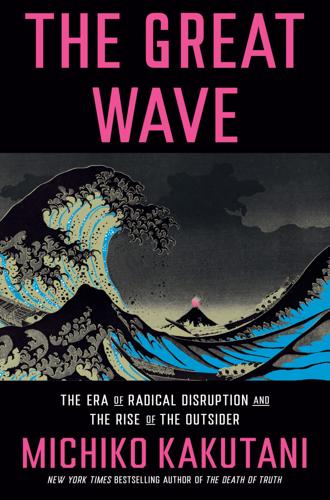
The Great Wave: The Era of Radical Disruption and the Rise of the Outsider
by
Michiko Kakutani
Published 20 Feb 2024
Bachman, adapted for ebook Cover design: Yang Kim Cover image: Katsushika Hokusai, The Great Wave Off the Coast of Kanagawa (altered), c. 1829–1831, Fine Art Images/Heritage Images/Getty Images ep_prh_6.2_146171367_c0_r0 CONTENTS Introduction Chapter 1 A Hinge Moment: Morbid Symptoms, Cascading Crises, and a Looming Paradigm Shift Chapter 2 Pirates and the New Frankenstein: How Outsiders Toppled the Status Quo and Unleashed a Tsunami of Unintended Consequences Chapter 3 Culture in the New Millennium: When the Edges Replaced the Center Chapter 4 Broken Windows and Sliding Doors: How Radicals Smashed the Overton Window Chapter 5 The Resistance Strikes Back: The New Grassroots Activism and the Power of Disruption Chapter 6 Outlaw Nation: America’s Love-Hate Affair with Outsiders Chapter 7 The Centrifugal Republic: Why Hackers, Politicians, and Business Leaders Embraced Decentralization Chapter 8 Optimizing Marginality: Outsiders and Outside-the-Box Thinking Chapter 9 Resilience in the Vuca-Verse: Coping with Volatility, Uncertainty, Complexity, and Ambiguity Epilogue Notes Additional Sources _146171367_ INTRODUCTION The Great Wave—It’s one of the best-known and most widely reproduced images on the planet, an image that embodies the feelings of dread and hope that come with swift, unpredictable change. Created around 1831 by the brilliant Japanese artist Katsushika Hokusai, the image has been embraced by multiple generations and cultures, from middle-class art lovers in Edo (Tokyo) delighted to acquire a wood-block print for the price of a bowl of noodles, to the nineteenth-century artists in France who helped formulate European modernism, to graffiti artists and skateboarders who have turned the wave into an instantly recognizable emoji and meme. Hokusai’s print has been held up as a symbol of the Far East, the relationship between East and West, and the hazards of climate change and rising sea levels in the Anthropocene.
…
. | Power (Social sciences) | Elite (Social sciences) Classification: LCC CB428 .K327 2023 (print) | LCC CB428 (ebook) | DDC 909.83—dc23/eng/20230822 LC record available at https://lccn.loc.gov/2023034010 LC ebook record available at https://lccn.loc.gov/2023034011 Ebook ISBN 9780525575016 crownpublishing.com Book design by Barbara M. Bachman, adapted for ebook Cover design: Yang Kim Cover image: Katsushika Hokusai, The Great Wave Off the Coast of Kanagawa (altered), c. 1829–1831, Fine Art Images/Heritage Images/Getty Images ep_prh_6.2_146171367_c0_r0 CONTENTS Introduction Chapter 1 A Hinge Moment: Morbid Symptoms, Cascading Crises, and a Looming Paradigm Shift Chapter 2 Pirates and the New Frankenstein: How Outsiders Toppled the Status Quo and Unleashed a Tsunami of Unintended Consequences Chapter 3 Culture in the New Millennium: When the Edges Replaced the Center Chapter 4 Broken Windows and Sliding Doors: How Radicals Smashed the Overton Window Chapter 5 The Resistance Strikes Back: The New Grassroots Activism and the Power of Disruption Chapter 6 Outlaw Nation: America’s Love-Hate Affair with Outsiders Chapter 7 The Centrifugal Republic: Why Hackers, Politicians, and Business Leaders Embraced Decentralization Chapter 8 Optimizing Marginality: Outsiders and Outside-the-Box Thinking Chapter 9 Resilience in the Vuca-Verse: Coping with Volatility, Uncertainty, Complexity, and Ambiguity Epilogue Notes Additional Sources _146171367_ INTRODUCTION The Great Wave—It’s one of the best-known and most widely reproduced images on the planet, an image that embodies the feelings of dread and hope that come with swift, unpredictable change.
…
GO TO NOTE REFERENCE IN TEXT for thousands of years: “Ar6 Synthesis Report: Summary for Policymakers Headline Statements,” Intergovernmental Panel on Climate Change, 2023, ipcc.ch/report/ar6/syr/resources/spm-headline-statements/. GO TO NOTE REFERENCE IN TEXT Epilogue One of his lesser-known prints: “Rare Hokusai Woodblock Is Themed on 1707 Mt. Fuji Eruption,” Asahi Shimbun, May 6, 2019, asahi.com/ajw/articles/13063386; “Hokusai, a Master of the Elements,” Elemental Japan, Aug. 15, 2020, elementaljapan.com/2020/08/15/hokusai-a-master-of-the-elements/. GO TO NOTE REFERENCE IN TEXT which occurred in 1707: Naomichi Miyaji et al., “High-Resolution Reconstruction of the Hoei Eruption (AD 1707) of Fuji Volcano, Japan,” Journal of Volcanology and Geothermal Research 207, nos. 3–4 (2011): 113–29, sciencedirect.com/science/article/abs/pii/S0377027311001879.
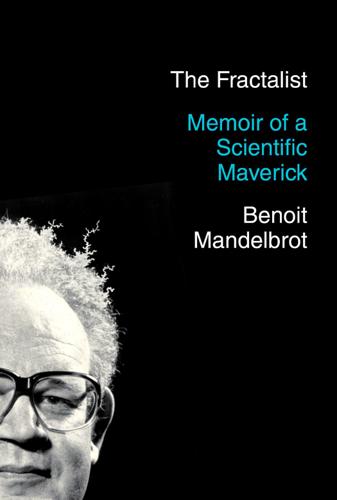
The Fractalist
by
Benoit Mandelbrot
Published 30 Oct 2012
Imitation: the first step to understanding Surface dimension 2.15 (Illustration Credit bm1.7) Surface dimension 2.5 (Illustration Credit bm1.8) Surface dimension 2.8 (Illustration Credit bm1.9) Fractal forgeries showing the relationship between fractal dimensions and roughness “Cool Afternoon” (Illustration Credit bm1.10) “Lethe” (Illustration Credit bm1.11) Artistic renderings of fractal landscapes Fractal painting of flowers, Augusto Giacometti (Illustration Credit bm1.12) Cast of a human lung (Illustration Credit bm1.13) The Great Wave, Hokusai (Illustration Credit bm1.14) Rough deposit of gold (Illustration Credit bm1.15) Turbulence on Jupiter (Illustration Credit bm1.16) Science, Art, and Nature Zooming into the Mandelbrot set (Illustration Credit bm1.17) “Pharoah’s Breastplate,” limit set of circle inversions (Illustration Credit bm1.18) Variation of the Mandelbrot set (Illustration Credit bm1.19) Deep into the Mandelbrot set (Illustration Credit bm1.20) “Cave painting,” modified Mandelbrot set fragment (Illustration Credit bm1.21) Quarternion Julia sets (Illustration Credit bm1.22) Illustration Credits Reprinted from The Fractal Geometry of Nature: 29.1 Courtesy Michael Frame: aft.1, aft.3 Augusto Giacometti, 1912: bm1.12 Sigmund Handelman: itr.1, 21.6, 23.2, bm1.6 Eriko Hironaka: 25.7 Katsushika Hokusai, ca. 1829–33: bm1.14 Mark Laff: itr.1 Mark R. Laff and Sigmund Handelman: 29.4 Shaun Lovejoy: bm1.4 Benoit B. Mandelbrot Archives: Title page, 1.1, 1.2, 1.3, 1.4, 1.5, 1.6, 2.1, 2.2, 2.3, 3.1, 4.1, 4.2, 5.1, 9.1, 9.2, 10.1, 11.2, 11.1, 18.1, 18.2, 21.4, 21.5, 22.1, 22.2, 23.3, 25.6, 26.1, 26.2, 26.3, 27.1, 28.2, 28.3, 29.2, 29.5, 29.6, 29.8 29.7, bm1.15 Peter Moldave: 25.1, 25.2, 25.3 Produced by Ken G.
…
(Illustration Credit 29.1) Skilled artists must find arrangements, like mixtures of eddies of all sizes, that look balanced; does not that mean that elements of all sizes are distributed in a natural—that is, fractal—way? The Fractal Geometry of Nature reproduced Hokusai’s print The Great Wave, the famous picture with Mount Fuji in the background. Hokusai was at his peak around 1800, but history provides examples of many earlier painters or philosophers who were aware of complicated shapes with fractal structure. Claude Lorrain, a French painter who worked mostly in Italy, painted landscapes that claim to be realistic, but in fact are extraordinarily simplified and easily interpreted in fractal terms.
…
We’d go our separate ways for a week or so, working out some details of what we’d seen. He’d call and we’d be off again. I think I shared his sense of innocent wonder. Benoit loved complicated things, the roughness of coastlines and price graphs, the music of Charles Wuorinen and György Ligeti, the paintings of Augusto Giacometti and prints of Hokusai. What he saw in all of these, what may have helped guide his thinking through the wanderings of his long (but still too short) career, was a sense that there were common features to all these examples. Patterns that kept recurring as he looked ever closer. To be sure, many scientists and artists had noticed this, and the examples of continuous, nowhere differentiable curves were familiar from basic real analysis courses.

The Runaway Species: How Human Creativity Remakes the World
by
David Eagleman
and
Anthony Brandt
Published 30 Sep 2017
Instead, Monet showed the cathedral in different lights. In one, the noon sun gave its facade a bleached pallor; in another, dusk illuminated it with red and orange hues. In representing a prototype in constantly new ways, Monet was making use of the first creative tool: bending. Like Monet, Katsushika Hokusai took a visual icon – Japan’s Mount Fuji – and created thirty-six woodblock prints, depicting it in different seasons, from different distances, and in different visual styles. Throughout history, cultures have been bending the human form in different ways. Mayan Japanese Ghanaian sculptures And they’ve equally manipulated the forms of animals.
…
Courtesy of the artist Pompidou Center Photo credit: Hotblack Chapter 3 Rouen Cathedral Photo by ByB Claude Monet: Rouen Cathedral – End of the Afternoon National Museum of Belgrade Claude Monet: Rouen Cathedral – Façade (Sunset), harmony in gold and blue Musée Marmottan Monet, Paris, France Claude Monet: Rouen Cathedral – Façade 1 Pola Museum of Art, Hakone, Japan Mount Fuji (No attribution required) Four of Hokusai’s “36 Views of Mount Fuji” (No attribution required) Mayan Sculpture, late Classic period American Museum of Natural History. Photo by Daderot, [CC0 or CC0], via Wikimedia Commons Japanese Dogu sculpture Musée Guimet, Paris, France Photo credit: Vassil Fertility Figure: Female (Akua Ba). Ghana; Asante. 19th-20th CE.
…
Scott ref1 flag series ref1 Flag (Johns, 1967) ref1 Flag (Johns, 1972) ref1 Flag (Moratorium) (Johns) ref1 Flatlands (1970) (Guston) ref1 Flea Theater (New York) ref1 flexibility ref1, ref2, ref3 cognitive ref1, ref2, ref3, ref4 companies ref1 flight ref1, ref2, ref3, ref4, ref5, ref6 Floating Heads (Cave) ref1 Foer, Jonathan Safran ref1 Ford, Henry ref1, ref2 Ford Edsel ref1 Ford Motor Company ref1 The Founding Mothers (Eagleman) ref1 frangible masts ref1 Frankenstein (Shelley) ref1 Franklin, Benjamin ref1 Frazier, Bud ref1, ref2 Freckles (spider-goat) ref1 French Art Academy ref1 “funnel of ideas” ref1, ref2 futevolei ref1 future ref1, ref2 car industry ref1 predictions ref1, ref2, ref3, ref4, ref5 simulating outcomes ref1 what-ifs ref1, ref2, ref3, ref4, ref5, ref6, ref7 “Future of Parenting” ref1 Gagaku (music) ref1 Gajasimha ref1 Ganesh, Chitra ref1 Gardner, John ref1 Gauguin, Paul ref1, ref2, ref3 GBO Innovation Maker ref1 Gehry, Frank ref1 General Electric ref1 General Mills ref1 General Relativity, Theory of ref1 gene-sequencing ref1 Gertner, Jon ref1 Giacometti, Alberto ref1, ref2, ref3 Gnomeo and Juliet (animated film) ref1 Goethe, Johann Wolfgang von ref1 Google ref1, ref2, ref3, ref4, ref5, ref6 Google Glass ref1 Google Translate ref1 Gordiner, Jeff ref1 Graham, Martha ref1 The Grasshopper Lies Heavy (The Man in the High Castle) (Dick) ref1 Green, Barrett ref1 Gregorian calendar ref1, ref2 Grendel (Gardner) ref1 Greyhound Bus Lines ref1 Grosse Fuge (Beethoven) ref1, ref2 Groundhog Day (film) ref1, ref2 Guerin, Amy ref1 Guernica (Picasso) ref1 Guston, Philip ref1, ref2 Guy Fawkes ref1 Guys and Dolls (musical) ref1 H-4 “Sea Watch” ref1 habit ref1, ref2, ref3, ref4, ref5 Hack Week (Twitter) ref1 hairstyles ref1 Hamlet (Shakespeare) ref1, ref2 Harrison, John ref1 Haute couture ref1, ref2, ref3 Haydn, Joseph ref1 health crisis ref1 hearts, artificial ref1 Heisenberg, Werner ref1 Hellman, Lillian ref1 Hemingway, Ernest ref1, ref2, ref3 Hendrix, Jimi ref1 Hermès ref1, ref2 Hewlett-Packard ref1 high definition (HD) video ref1 high dynamic range (HDR) photography ref1 “Hills Like White Elephants” (short story) (Hemingway) ref1 Hilversum ref1 histories, alternate ref1 history, mining ref1 art ref1 design ref1 literature ref1 music ref1 H.O. Wheeler Elementary School (Burlington) ref1 Hobbes, Thomas ref1 Hockney, David ref1 Hokusai, Katsushika ref1 Holoroom ref1 Holz, Karl ref1 Honda ref1 honeybees ref1, ref2, ref3 Honeywell ref1 horses ref1 Hot Bertaa tea kettle ref1 How Buildings Learn (Brand) ref1 Hughes, Robert ref1 human form bending ref1, ref2, ref3 blending ref1, ref2 mythical creatures ref1 human genome project ref1 humor ref1 Iberian sculpture ref1 IBM ref1, ref2, ref3 Icebag (Oldenburg) ref1 idea flings ref1 idea quotas ref1 IDEO ref1, ref2 Idriss, Ali Mohamed Younes ref1 Ihering, Hermann von ref1 image recognition ref1 image-labeling ref1 imagination ref1, ref2, ref3 “Imagine Mars” project ref1 Indian dance ref1 indigenous art ref1 Industrial Revolution ref1, ref2, ref3 information economy ref1 instant replay ref1 insulin ref1 intravenous (iv) drips ref1 inventions see design iPad ref1 iPhone ref1, ref2, ref3, ref4 iPod ref1, ref2, ref3, ref4 Isaiah (Michelangelo) ref1 iTunes ref1 Ive, Jonathan ref1, ref2, ref3 IXI music player ref1 Japanese Imperial court ref1 Japanese Noh drama ref1 The Japanese Footbridge (Monet) ref1 Jay Z. ref1 Jesus phone (iPhone) ref1, ref2, ref3, ref4 “Jewish science” ref1 jigsaw method ref1 Jobs, Steve ref1, ref2, ref3, ref4 Johns, Jasper ref1, ref2, ref3 Johnson, Ben ref1 Johnson, Lonni Sue ref1, ref2 Johnson, Steve ref1 JR (artist) ref1 The Judgment of Paris (Raimondi) ref1 K-12 campuses ref1 Kahlo, Frida ref1, ref2 Kandinsky, Wassily ref1, ref2 Kettering, Charles ref1, ref2 Keystone Cops ref1 Khine, Michelle ref1 Killian, Michael ref1 kin selection ref1 King Jr, Martin Luther ref1 King Lear (Shakespeare) ref1 King Tee ref1 kingfisher ref1 Kitty Hawk (airplane) ref1 knives ref1 Koestler, Arthur ref1 Kramer, Hilton ref1 Kramer, Kane ref1, ref2 Kranz, Gene ref1, ref2, ref3, ref4 Krzywy Domek (“Warped Building”) ref1 Ku Klux Klan ref1 “Kubla Khan” (Coleridge) ref1 Kulich, Max ref1 Laarman, Joris ref1 The “Lady Blunt” Stradivarius ref1 Land, Edwin ref1, ref2 landscaping ref1 office ref1 Zen Gardens ref1 language bending ref1 blending ref1 cinema ref1 coding ref1 cultural conditioning ref1 Google Translate ref1 universal ref1, ref2 Large Hadron Collider ref1 Las Meninas (Velázquez) ref1 Picasso variations ref1 lasers ref1, ref2, ref3 The Last Judgment (Michelangelo) ref1 Lauter Piano Company ref1 LCD televisions ref1 Le Bordel d’Avignon (Picasso) ref1 Le Déjeuner sur l’herbe (Manet) ref1, ref2, ref3 Le Déjeuner sur l’herbe (Picasso) ref1 The LEGO Movie (2014) ref1 Leguia, Luis ref1 Leigh, Simone ref1 Lenard, Philipp ref1 Lennon, John ref1 Lenormand, Louis-Sébastien ref1 Les Demoiselles d’Alabama (Colescott) ref1 Les Demoiselles d’Avignon (Picasso) ref1, ref2, ref3, ref4, ref5 “Let Me Ride” (song) ref1 “Letter from Birmingham Jail” (King) ref1 Levi ref1 Lewis, Randy ref1 Lichtenstein, Roy ref1, ref2 “Life is Art” festival ref1 Ligeti, Györgi ref1 light bulbs ref1 Light Warlpiri ref1 Lightning Sonata (Cicoria) ref1 lions ref1 lipids ref1 liquid crystal displays ref1 literature bending ref1, ref2 breaking ref1, ref2 education ref1, ref2 mining history ref1 proliferating options ref1 see also drama Loewy, Raymond ref1 Longitude prize ref1 Longwell, Charles ref1 Lost in Space (tv) ref1 Lou Ruvo Center for Brain Health (Gehry building) ref1 Louis C.K. ref1 Louvre ref1 Lovelace, Ada ref1 Lowes, John Livingston ref1 Lowe’s (US retailer) ref1 McCarthy, John ref1 McCartney, Paul ref1 MacWorld ref1 Maeda, John ref1 Malevich, Kazimir ref1 mami wata (mermaid) ref1 The Man in the High Castle (Dick) ref1 Manet, Edouard ref1, ref2, ref3 Manley, Tim ref1 manufacturing economy ref1 Marclay, Christian ref1 Marlborough Gallery ref1 The Marriage of Figaro (Beaumarchais) ref1 Martin, George ref1 Massachusetts Institute of Technology ref1 Maternity (Brandt) ref1 mathematical techniques ref1 Maugham, W.
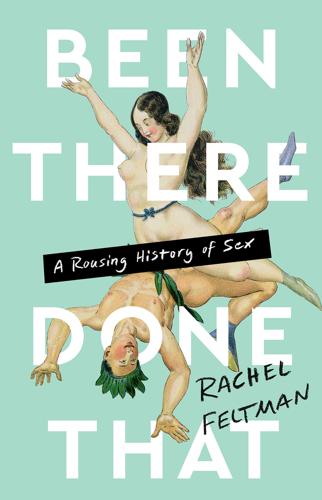
Been There, Done That: A Rousing History of Sex
by
Rachel Feltman
Published 14 May 2022
Because Shinto and Buddhism, the prevalent religions in Japan, both present sex as natural, the Japanese have long viewed it through a fairly neutral lens.9 Shinto in particular features stories of gods engaging in sex and uses phallic symbols to promote health and fertility. Our incapacity to define porn is never clearer than when we discuss shunga, a style of erotic art that saw its heyday in Japan between the seventeenth and nineteenth centuries. When the British Museum in London hosted an exhibit of the genre, most famous for Katsushika Hokusai’s The Dream of the Fisherman’s Wife, curator Timothy Clark told the BBC, “People who haven’t seen shunga before will be surprised by how explicit it can be. But this is sexually explicit art, not pornography, produced to exactly the same technical perfection as art in other formats by the same people.”10 In the very same article, he told the reporter that, well, actually, maybe they were sexually explicit art and porn: “The division between art and obscene pornography is a Western conception,” said Clark.
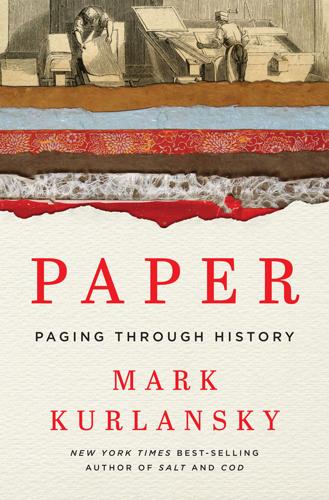
Paper: A World History
by
Mark Kurlansky
Published 3 Apr 2016
Moronobu hand-colored his blocks occasionally, but his work was mostly black-and-white, and his style of woodcarving continued to be popular after his death in 1694. In the eighteenth century, artist Okumura Masanobu began making colored wood-block prints in the ukiyo-e style by using several blocks in different colors. Ukiyo-e reached its highest development in the nineteenth century, shortly before Gauguin was born, with the landscape prints of Katsushika Hokusai. His 1831 wood-block series, “Thirty-Six Views of Mount Fuji,” is the world’s most famous work of ukiyo-e, and one of these prints in particular, The Great Wave of Kanagawa, is one of the most famous works of Japanese art. Gauguin, who admired Japanese art in general, was particularly drawn to ukiyo-e.
…
William Pierce, mariner, An, 206 almanacs, 215–16 Almanzor, 86 Almohad dynasty, 74 Almoravid dynasty, 74 Alphabet, An, 262 Alphabet of Children (Holbein), 116 alphabets, xiv, 15 development of, 6–7 moveable type and, 113–14 see also writing; specific alphabets Altamira, Spain, cave art in, 3 Altdorfer, Albrecht, 130 Amalfi, Italy, 78, 82 amate (Aztec writing surface), 152–54, 160–61 American colonies: first paper money in, 211, 342 newspapers in, 211–13, 342 papermaking in, 208–10, 212, 213–15, 342 printing in, 206, 207–8, 209, 211–13, 215–17, 342 American Indians, 207 American Revolution, 202, 208, 232 Continental currency in, 209 papermaking in, 218–25 Ames’ Almanack, 216 Amman, Jost, 188 Amsterdam, Netherlands, 176 Amu Darya River, 50 Ancona, Italy, 78 Andong Hanji, 305–6 Andreä, Hieronymus, 125, 126, 130 Anglicus, Robert, 89 Anhui Province, China, 305 anti-Semitism, 85 Anti-Slavery Society, 203 Antwerp, Belgium, 172 Apicius, 63 Apparition du livre, L’ (Febvre and Martin), 162 Appert, Nicolas, 241–42 Apuleius Barbarus, 194 aquatint, 174 Arabs, 176 bureaucracy of, 52 calligraphy of, 51, 52, 55, 60, 106 distillation of alcohol by, 59 European culture influenced by, 77 food writing by, 62–65 Greek manuscripts translated by, 57–58 libraries of, 53, 58, 59–60, 69 literature of, 61–62 oral literature of, 51, 60 papermaking by, xiii, xv, xix, 48–49, 52, 53, 54–55, 97, 339 papyrus and, 53 parchment and, 53, 54 philosophy and theology under, 69–70 pre-Islamic writing of, 51 scientific knowledge of, xv, 52, 57–59, 69, 85, 86 scribes of, 51–52, 53–54, 55, 56–57, 60, 105–6 use of term, 49–50 writing as primary visual art of, 60 see also Muslims, Islam Arches, 265, 318 Archestratus, 63 Archimedes, 58 architecture: Andalusian, 70, 75 paper in, 308–9, 314–15, 322 Aristotle, 19, 194 armillary sphere, 87 art: affordable, woodcuts as, 123–24, 128 from paper, 318, 320–21 artificial intelligence, 328 artists: papermaking and, 198–202, 318–19 Art of Paper Making, The (Lalande), 169–70 Art of Preserving All Kinds of Animal and Vegetable Substances for Several Years, The (Appert), 241–42 art paper, machine-made, 265, 269, 280 Arts and Craft movement, 256–57 Arturo’s Desert Eagle, 273 asbestos paper, 249 Asia: European trade with, 176–77 expanding European knowledge of, 87–88 Asia Pulp & Paper (APP), 283, 295, 297, 298 Aspen Art Museum, 314 Assyrians, xix–xx, 12, 108 “As We May Think” (Bush), 323, 327 Atlantic, 259, 327 Atogi, Korean prince, 44 Atuona, French Polynesia, 266 Augsburg, Germany, 125 Australian aborigines, 4 authors, impact of printing on, 196 Auvergne, France, 83 Averroes, 69 Avignon, France, 111, 115 Avisa Relation oder Zeitung, 203, 341 Aztecs, xviii, 28, 150–51, 248, 341 calendar of, 151–52 codices of, 152, 159, 341 number system of, 152–53 paper-like material of (amate), 152–54, 156–57, 160–61, 341 possible true papermaking by, 154–55 scribes of, 151–52 writing of, 148, 151–52 Babbage, Charles, 325, 326 Babylon, 6, 13 Bacon, Francis, 191, 194, 195, 231 Bacon, Roger, 88, 90 bagasse, papermaking with, 284–88 Baghdad, 50, 58, 65, 339 paper mill in, 54–55 Baghdad paper, 55, 56 Balearic Islands, 73 Balkh, Afghanistan, 57 Bally, Ellen and Steart, 199 Bamberg, Germany, 125, 133 bamboo: paper from, 33, 302 as writing surface, 26, 27–28, 32 Bambyx, Syria, 55 Ban, Shigeru, 314 Banbury, Oxfordshire, 242 Bantu, 5 Barcelona, Spain, 86, 141 Barjon, 318 Barmak, Khalid, 53–57 Barmak family, 57 Bart, Italy, 50 Bartholomaeus Anglicus, 181 baseball cards, 261 Basel, Switzerland, printing in, 163 Baskerville, John, 197 basket making, 317 Basque language, 5 Basques, 68, 77, 316–18, 335 Basra, 60 Bay Psalm Book, The, 206–7 Bayt al-Hikma, 58 Beilby, Ralph, 201 Belgium, 171 Bellaert, Jacob, 172 Bell Labs, 344 Bembo, Pietro, 137 Bembo (typeface), 137 Bentley, Richard, 261 Bentley’s Miscellany, 261 Berbers, 50, 66–67, 74, 339 Berlin, Germany, 267 bertsolari, 335 “Betrayed Inhabitants of the City and Colony of New York, The,” 216 Bewick, Thomas, 200–201, 201, 213, 239, 258, 343 Bible: of Gutenberg, 114, 340 of Luther, 164 Massachusetts language edition of, 208 Polyglot, 172–73 of Quentell, 122 Bibliothèque Nationale, Paris, 150 Bicknores, Dartford, England, 183 Bilbao, Spain, 77 binderies, 172 Binns, John, 225 Birdseye, Clarence, 286 Birn, Raymond, 230 Bi Sheng, 104, 111 Bishop, Nathaniel, 253 Black River, Wis., 246 Blake, William, 238 Blauw, Dirk and Cornelius, 224 bleach, 171, 239, 288, 301, 342, 343 Bloom, Jonathan, 52, 60 Bly, Oreg., 273 Boccaccio, Giovanni, 95, 340 Bodleian Library, 152 Bologna, Italy, 82, 111 Bonnard, Pierre, 257 bookbinders, 193 Book of Curious and Entertaining Information (Al-Tha’īlibī), 48 Book of Martyrs (Foxe), 164, 221 Book of Perfume Chemistry and Distillation (Al-Kindt), 59 Book of Songs, The, 20, 39 books: in American colonies, 215 block-printed, 124, 125, 263, 269 burning of, 146, 147 in China, 26, 105–6, 107 and cost of paper, 230 covers of, 191 endpapers of, 191 French Revolution and, 233 future of, 328–30 and growth of private reading, 94–95, 237, 238 handmade, 257–58 illuminated, 93, 95 illustrated, for children, 202, 32 initial capitals in, 116 in Korea, 106 limited-edition, 257 parchment as medium of choice for, 97 popular demand for, 226 printed vs. handwritten, 116–17 remaindering of, 238 Renaissance demand for, 110–11 science and, 194, 195 as status symbols, 84 woodcuts in, see woodcut illustrations see also codex, codices bookselling, growth of, 110 Bordeaux, France, 73, 141 Borges, Jorge Luis, 20 Borrell II, count of Barcelona, 86 Boston, Mass., 212, 213, 253, 257, 342 Boston News-Letter, 212 Boston Public Library, 257 Boston Society of Arts and Crafts, 257 Bower, Peter, 264–65 boxwood, 200 Boyle, Robert, 191, 194, 195 Bracquemond, Félix, 263 Bradford, William, 209–10 Bradshaw, Md., 221 Brahmagupta, 57–58 Brandis, Lucas, 341 Brandywine, Battle of (1777), 221 Brandywine Creek, 225 Brandywine Mill, 243 Braque, Georges, 269, 318 Brazil, papermaking in, 283 Breslau, 133 Breydenbach, Bernhard von, 126 British Museum, 102 Brito, Johannes, 115 broadsides, 216, 223, 226, 228 Broich, Germany, 208 Brown, Thomas, 209 Brückmann, Franz Ernst, 249 Bruegel, Pieter, 172 Bruges, Belgium, 111, 115, 180 brushes, 16, 26, 27, 37, 338 Budapest, Library of, 159 Buddhism, 44 printing and, 99–103 and spread of papermaking, xv, xviii, 42, 44, 49, 98, 339 Buell, Abel, 218, 342 Bulmer, William, 239 bureaucracy: in Muslim world, 52 paper and, 32, 44–45, 52 Burgkmair, Hans, 128, 129 Burgundy, France, 128–229, 167 burin, 131, 200 Burnet, William, 210 Burton, Richard, 61 Bush, Vannevar, 323, 327, 344 Business Week, 286 Buyer, Bathélemy, 140 Byron, Lord, 326 Cadart, Alfred, 263 Cade, Jack, 185–86 Cai Lun, xviii, 29–31, 38, 114, 177, 334 Caine, Hugh, 210 Cairo, Egypt, 56, 289 calculations, paper and, 119 Calderón, Diego de Landa, 159 Cali, Colombia, 286 calligraphy, 195–96 Arabic, 51, 52, 55, 60, 106 Japanese, 44 Korean, 306 calligraphy, Chinese, 35–38, 106, 301, 303, 303, 304, 314 calligraphy, Chinese (continued) brush styles in, 35–36, 37–38, 302–3 painting and, 39 Calvin, John, 165 Cambridge, England, 183 Cameron, Robert, 242–43 Campbell, John, 212 Campbell’s Soup Company, 274 Canada, 253, 281–82, 301 Cangjie, 23, 24 Canson & Montgolfier, 318 Canterbury Tales, The (Chaucer), 340 carbon emissions, 289, 295 cardboard, 286, 322, 334 Cartiere Milani Fabriano, 277 cartoons, 259, 260–61, 263 Carvajal Pulp & Paper, 288–89 Caslon, William, 257, 258 Caspian Sea, 87 Castaldi, Panfilo, 115 Castellano (Giano) River, 78 Castile, 73 Castro, Fidel, 145 Catalonia, 77 Catania, Sicily, 73 Catherine of Aragon, queen of England, 182 Cauca valley, Colombia, 287 caustic soda, 288, 289, 300, 301 cave art, 3–4, 337 Caxton, William, 179–81, 341 cellulose, 28–29, 251, 252, 285 Celulosa Cubana, S.A., 285 Census, US, of 1890, 326, 344 Central Asia, 31, 50, 100, 148 papermaking in, 49, 52 Cervantes, Miguel de, 132, 143, 147, 186, 238, 341 Cézanne, Paul, 264 Champagne, France, 83 Chancery Standard, 182 Chang, Arnold, 314 Chang’an, China, 32 change, 323–36 Diderot on, 323, 327 paper and, 326–36 technological, see technological change Vannevar Bush on, 323, 327 Changshu, China, 294 Charivari, Le, 260 Charlemagne, 59, 76, 90, 130 Charles II, king of England, 211 Charles V, Holy Roman Emperor, 147, 156 Charles V, king of France, 89–90 Charlie Hebdo, 233 charta bambycina (cotton paper), 55 charta damascena (Damascus paper), 55 Chaucer, Geoffrey, 181, 340 Kelmscott Press edition of, 257 Chemnitz, Germany, 83 Cherokee, 5 Chester Creek, 209 Chiang Chung, 32 Chiang Yee, 37–38 chiaroscuro, 128 children’s books, illustrated, 202, 342 Chillida, Eduardo, 317 China, 5, 10, 168, 294 books in, 26, 105–6, 107 bureaucracy in, xviii, 24, 25–26, 32 clocks in, 89 Communism in, 298–99 compass invented in, 92 deforestation in, 294 divination in, 23, 24–25, 92 energy consumption in, 295 Europeans’ knowledge of, 176 gardens in, 296–97 handmade paper in, 299–305 High Tang period in, 40–63 kites in, 273 literacy in, 26, 31–32 modern paper industry in, 293–305 moveable type invented in, xix, 104–5, 340 oral literature in, 39 painting in, 38–39, 41 papermaking in, xiv–xv, xviii, 23, 28–35, 38, 49, 101, 105, 176, 178, 188, 249, 293–305, 338, 344 poetry in, 39, 40, 41 pre-paper writing materials in, 24, 25, 26, 27–28, 32 printing invented in, 99, 107, 339 private businesses in, 299 seals in, 99, 338 South, 296 tree farms in, 298 used paper imports of, 294 woodblock printing in, 99 wood pulp imports of, 294 writing in, see Chinese writing system China National Library, 305 Chinese writing system, 4, 31, 114, 337, 339 brushes and, 27, 338 calligraphy and, see calligraphy, Chinese divination and, 23, 24–25 ink and, 26–27 Japan and, 43–44 Korea and, 43 legendary origin of, 22–24 Mao’s simplification of, 35 moveable type and, 104–5 Shang period, 25 vertical direction of, 27–28 Zhou period, 26 ch’in (qin), 39 chlorine, 239, 342 chloride dioxide, 288 Cholula, Mexico, 150 Christians, in al-Andalus, 68, 86 Church of England, 182, 206, 207 Churchyard, Thomas, 186–87 Cicero, 108, 110, 340 civilization, paper as mark of, xviii–xix Civil War, Rwandan, 314 Civil War, US, 245–46, 258, 259, 278 clay, as writing surface, 7, 9, 11 Clemente VIII, Pope, 82 Cleveland Museum, 264–65 climate change, 289, 295 clocks, 89–90 clothing, of paper, 273–74 Cluny monastery, 60 coal, Chinese consumption of, 295 Cobb, Thomas, 242 Cock, Jerôme, 172, 173 codex, codices, 53 Aztec, 152, 159, 341 as forerunner of books, 13 Mayan, 149, 150, 154, 159, 340, 341 parchment and, 14 Codex Dresdensis, 150, 340 Codex Mendoza, 152 Codex Peresianus, 150 Codex Troano-Cortés, 150 Codorus Creek, 245–46 coins, 210, 211 coke, 238 Cologne, 122, 133, 180 printing in, 133–34, 341 Colombia, 286, 287 Colonna, Francesco de, 135–36 colophon, 126 color, Newton’s experiments with, 194–95 commerce: Phoenician alphabet and, 15 writing as response to needs of, 5–6 Common Sense (Paine), 202–3, 216–17 communication, as primal urge, 4 compass, 92–93, 97, 176 computers, development of, 325, 327, 344 Confucius, Confucianism, 26, 31, 44, 104 Connecticut, 211 Constitution, US, 224 Continental Army, 214 Continental Congress, 222 Continental currency, 209, 222 Conwell, Clarke, 256, 258 Cook, Henry, 191 copper-plate etching, 130, 173–74, 176, 187, 201–2 Coptic Christians, parchment used by, 56 Córdoba, Spain, 69, 70, 74 Cornejo, Juan, 160 Cornelilus (Dutch bookseller), 115 Corot, Jean-Baptiste-Camille, 263 Corporation for Promoting and Propagating the Gospel of Jesus Christ in New England, A, 207, 208 Cortés, Hernán, xviii, 147, 150, 155–57, 158, 341 Coster, Laurens Janszoon, 114–15 cotton, 187, 213, 214, 250, 251, 252, 254, 265, 317, 319 coucher, 188–89, 280 couch rolls, 240 counterfeiting, of paper money, 222 craftsmanship, return to, 256–57 “Cramming More Components into Integrated Circuits” (Moore), 328 Cranach, Lucas, the Elder, 128 Crane, Walter, 256 Crane Company, 254, 277–78, 290 Crantz, Martin, 139 Crete, 4, 109, 337 Crimean War, 258 Cromberger, Juan, 159, 160 Cromwell, Oliver, 175, 207 Cromwell, Thomas, 182 Cruikshank, George, 261 Cuba, 285 Cuenca, Spain, 142 Cuesta, Juan de la, 143, 144 Cumberland, England, 193 cuneiform, 6–7, 8, 9, 11, 23, 25, 337 Curtis Paper Company, 278, 290 Curtisville, Mass., 252 Cyprus, 50 Cyrenaica, 50 Daguerre, Louis-Jacques-Mandé, 236 daguerreotypes, 236 Daily Courant, 204, 342 Daily Telegraph, 331 Daily Universal Register, 204, 343 Dalton, Mass., 254, 290 Damascus, Syria, 55, 59 Damascus paper (charta damascena), 55 Dance of Death, The (Holbein), 116 Dancho, 44, 339 dandy rolls, 240, 280 Dante Alighieri, 20, 76, 84, 115, 340 Darly, Scotland, 183 Daumier, Honoré, 260, 260 Dauphiné, France, 229 Day, Matthew, 206, 207, 215 Daye, Stephen, 206 Dead Sea Scrolls, 12 Decameron, The (Boccaccio), 95, 340 deckle edges, 187–88, 258, 318 Declaration of Independence, 202, 257 imported paper used for, 224 parchment copy of, 223 printing of, 223–25 Defoe, Daniel, 163, 196, 203 deforestation: in China, 294 papermaking and, 281–84 Degas, Edgar, 264 Delacroix, Eugène, 236 Delft, Netherlands, 172 Della Femina, Jerry, 332 Del Tuppo, Francesco, 134 Demaine, Erik, 321–22 Demarest, Nicolas, 232 Denmark, papermaking in, 342 De proprietatibus rerum (Bartholomaeus), 181 “Description and playne discourse of paper, A” (Churchyard), 186–87 De Vinne, Theodore Low, 108–9 “Dialogues sur la Peinture dans la Ville de Rome” (Francis of Holland), 118 Dialogus creaturarum moralizatus (Leeu), 172 Diamond Sutra, 100, 102–3, 103, 107, 340 Díaz del Castillo, Bernal, 155 Dickens, Charles, 258, 261 Dickinson, John, 242, 243, 343 Dickinson foundry, 257 Dictes and Sayings of the Philosophers, 180 Diderot, Denis, 112, 170, 226, 227, 228, 230–31, 233, 235, 237–38, 241, 244, 256, 323, 327 Didot, Pierre-François, 240 Didot family, 226–27, 240 Didot typeface, 240 Dieu Donné Press, 319 Difference Engine, 325 digesters, 252–53, 279, 288 digital age, fears about, 334–36 diptychs, 13 divination, 23, 24–25, 92 Divine Comedy (Dante), 20, 340 Doctor, Ken, 331–32 Domesday Book, 90 Donkin, Bryan, 241, 242, 243, 343 Don Quixote (Cervantes), 132, 143–44, 144, 145–46, 196, 341 Doolittle, Isaac, 218, 342 Doolittle, James, 271 Dorchester, Mass., 207 Doré, Gustave, 263 Doubleday, 137 drawing, xiv, 2 paper as superior medium for, 118–19 as primal human urge, 3, 4, 118, 337 Dresden, fire-bombing of, 150 Dresden Codex, 154, 340 drop hammers, 80, 83 Ducrest, Charles-Louis, 191 Dufy, Raoul, 257 Dunhuang, China, cave temples at, 101–2, 104 Dunlap, John, 223–24 Dünne, Hans, 111, 113 Durand, Peter, 242 Dürer, Albrecht, 119, 120, 123, 125, 130, 147, 172, 174, 190, 265, 266, 268 etchings of, 130, 341 goldsmith training of, 126 woodcuts of, 127–28, 127 Dutch East India Company, 176 Dymott, Richard, 192 East Asia: paper arts in, 314–16 papermaking in, 42, 47 ebooks, 328–29 Edict of Nantes (1598), 184 Edison, Thomas, xvi, xviii Edward IV, king of England, 180 Egypt, 50, 52, 73, 339 Arab conquest of, 53 papermaking in, 56, 289, 340 Egypt, pharoanic, 5, 9 writing in, xix, 4, 9–10, 11–12, 24, 336, 337, 339 Eisenstein, Elizabeth L., 164 El Castillo cave, 337 Electronics, 328 electronic word processors, xiv Elements, The (Euclid), 58 Eliot, John, 207–8 Elizabeth I, queen of England, 183–84, 186 Elizabethtown, N.J., 210 El Paular monastery, Segovia, 143–44 Elston Press, 258 emoticons, 336 Encyclopédie (Diderot), 226, 231, 323 England, 73 newspapers in, 204 paper as used in, 189–91, 340 papermaking in, 179, 181–93, 197–98, 199, 250, 341, 342 paper marbling in, 191–93 printing in, 179–82, 341 printmaking in, 201–2 written law in, 90–91 see also Great Britain English language, standardization of, 181, 182 engravings, wood, 200–202 environmentalism, papermaking and, 282–84, 289–92, 297, 299–300 Environmental Protection Agency, 291 Epistolae ad Familiares (Cicero), 340 Epistolae Gasparini (Gasparinus de Bergamo), 139 Erasmus, Desiderius, 163 escapements, 89 esparto grass, 250, 265 Espinosa, Antonio de, 160 Essay for the month of December 1716 . . . . , 248 Essinger, James, 325 Estates-General, 234 etchings, 130–31, 200, 201, 263, 269, 341 copper-plate, 130, 173–74, 176, 187, 201–2 ethanol, 287 Etruscan alphabet, 16 eucalyptus, 283, 285 Euclid, 58 Eumenes II, king of Pergamum, 13–14, 338 Euphrates River, 6, 7, 50, 53, 54, 55 Euro currency, 277 Europe, Europeans: carved-block printing in, 110–11, 340 compass adopted by, 92–93 explosion of literacy in, 110 increased knowledge of Asia in, 87–88 influence of Arab culture on, 77 intellectual backwardness of, xix, 85 Japanese paper imported by, 177–78 libraries in, 94, 116 Middle Ages in, 76–77, 90–95 oral tradition in, 94–95 papermaking in, 87, 96–97 Renaissance in, 110–11, 117, 118–22 scientific discoveries in, 88–89 as slow in adopting paper, xv, xix, 73, 77, 83, 85 Evelyn, John, 191 Examination of the Rights of the Colonies upon Principles of Law, An (Dymott), 192 experimental method, 194–95 Exposition Universelle (1889), Paris, 264 Faber, Jakob, 163 Fabriano, Italy, 276–77 papermaking n, 78–83, 87, 120, 340 Fabriano Mills, 277 Fadl al-Yahyã, Al-, 53, 58 fanggu, 41, 296 Fantin-Latour, Henri, 263 Faust (Goethe), 236 Fauvism, 264 Febvre, Lucien, 162 Federalist Papers, 224 Federico of Urbino, 116 Fedrigoni Group, 277 felt, 79, 189, 228 felting, 29 felting mills, 79 Feltre, Itlay, 85, 115 Feng Dao, 104 Ferdinand, king of Spain, 157 Ferdowsi, Abolqasem, 60–61 Fez, Morocco, 71 fiber paper, 278 Fibonacci (Leonardo Pisano), 89 Fibonacci series, 89 Fichet, Guillaume, 138–39, 140 fig trees, 10, 153–54, 161 Financial Times, 331 firearm cartridges, 189, 190 Flameng, Léopold, 138 Flanders, Belgium, 232 flax, 56, 71, 83, 187, 209, 250, 251, 252, 265 Florence, Italy, 82, 84, 121, 134 Flugschriften (pamphlets), 165 Foligno, Italy, 82 food writing, 62–65 Ford, Jazaniah, 214 Formfit Rogers, 274 Formschneiders (wood-block carvers), 125, 128, 129, 130, 188, 259 Fortune, 278 Four Books on Human Proportion (Dürer), 120 Fourdrinier, Henry, 241, 243 Fourdrinier, Sealy, 241 Fourdrinier machines, 241, 243, 244, 245, 255, 276, 279–81, 288, 318, 343 Four Horsemen of the Apocalypse, The (Dürer), 127 Fox, William, 203 Foxe, John, 164, 221 Frame Breaking Act (1812), xvi France, 73, 167, 184, 226 literacy in, 230 oral culture in, 234 papermaking in, 83, 228–29, 231–32, 340 printing in, 134, 138–41, 165, 227–28 Franche-Comté, 234 Francis of Holland, 118 Franco of Cologne, 92 François I, king of France, 166 Frankfurt, Germany, 111, 133, 141, 165 Franklin, Benjamin, 197, 198, 215, 222, 223 currency printing and, 192 in newspaper business, 212 paper mills of, 209, 212 Franklin, James, 214 “Freeman’s Oath, The,” 206 French Revolution, 202, 228, 244 printing and, 232–35 Friburger, Michael, 139 Froben, Johann, 163 Fuchun River, 302 fulling mills, 184 Fulton, Robert, xviii funerals, Chinese, burning of paper at, 34–35 Fust, Johann, 114, 117, 124, 132, 133 Fu Xi, legendary Chinese emperor, 22–23 Gainsborough, Thomas, 189 Galen, 63 Gamble, John, 240 gampi, 45, 312, 319 Gandhi, Mohandas, 224 Gao Lin, 37 Gao Xianzhi, 48 Gao Xingjian, 314 Gart der Gesundheit, 194 Gasparinus de Bergamo, 139 Gauguin, Paul, 264–66, 267 Gazette Universelle, 233 Gela, Sicily, 63 General History of Air, The (Boyle), 195 General History of China, The (Halde), 177 General History of Quadrupeds, A (Beilby), 201 General History of the Things in New Spain (Sahagún), 153 Genesis, book of, 6, 7 Geneva, Switzerland, 165 Genoa, Italy, 73, 82 George III, king of England, 217, 250 Gering, Ulrich, 139 German Expressionists, 264, 266–68 German Peasant War (1524–25), 166 Germantown, Pa., 208–9 Germany: papermaking in, 83, 122, 340 as printing industry center, 122–23, 132–33, 162, 183, 184, 341 Gesner, Konrad, 193 Gettysburg, Battle of (1863), 245, 246 Gibraltar, Strait of, 67, 339 Gilpin, Joshua, 222, 225, 239, 243, 343 Gilpin, Thomas, 243–44 Giunta, Lucantonio, 135 Glatfelter, Philip Henry, 246 Glatfelter Company, 246, 254, 255, 276, 277, 278–81, 289 Glover, Elizabeth, 206 Glover, John, 206, 215 God’s Man (Ward), 270 Gogh, Vincent van, 265 gohei paper, 308 Gokayama, Japan, 310 Gold HuaSheng Paper Mill, 297–98 Goltzius, Hendrick, 173 Gong Bin, 304–5, 316 Gosin, Susan, 319 Gouda, Netherlands, 172 Gould, Harry, 333–34 Goya, Francisco, 174 Grace, William Russell, 285–86 Grace & Company, 285–86 Grainsborough, Thomas, 189 Granada, Spain, 70, 75 graphic novels, 269 graphite, 193 Great Britain: newspapers in, 331, 343 wood pulp imported by, 253 see also England Great Depression, 278 Great Exhibition of 1851, London, 261 Great Gunpowder Falls, 221 Greatrake, Lawrence, 243–44 Great Wall of China, 27 Great Wave of Kanagawa, The (Hokusai), 266 Greece, ancient, 4, 5, 12, 14 engraved maps of, 108 food writing in, 63 hydraulic engineering by, 52, 54 science in, 86 transition from oral to written culture, 17–18 writing in, 2, 8, 338 Greek alphabet, 15–16, 338 Green, Bartholomew, 212 Green, Samuel, 207–8 Greene, Robert, 196 Greenwald, Glenn, 334 Gregorius, 136 Gregory IX, Pope, 157 Griffo, Francesco, 137 Grolier de Servières, Jean, 138 Guadalete, Battle of, 68 Guangxi Province, China, 298 Guatemala, 148 Guernica (Picasso), 268 Guido of Arezzo, 91 Gu Kaizhi, 39–40 Gulliver’s Travels (Swift), 196 gunpowder, 88, 97, 148, 190 guns and ammunition, paper for, 190, 220–21, 242, 278 Guo, 39 Gutenberg, Johannes Gensfleisch, xviii, 111, 116, 132, 133, 329 Bible of, 114, 340 as goldsmith, 111, 123–24 innovations of, 113 printing experiments of, 111, 113–14, 340 Haarlem, Netherlands, 114–15, 172 hafiz, 51 Hahn, Ulrich, 134 Hainan Island, 298 Halde, Jean-Baptiste du, 177 Hallmark Cards, 274 halwa, 65 Hamdani, 63 Hamilton, Alexander, 224, 225 Hancock, John, 208, 223 Hancock, Thomas, 208 Han dynasty, 29–30, 35, 39, 43–44, 101, 293 Hangul (Korean writing system), 105 hanji (handmade paper), 305–6, 306 Hapsburg dynasty, 167 Harijan, 224 Harper & Brothers, 258–59 Harper’s Weekly, 258–59, 259 Harris, Benjaminm, 212 Harun al-Rashid, Caliph, 53, 58, 59, 62 Harvard University, 206, 207, 257 Hauer, Jacob, 245 Hebrew alphabet, 15 Hedin, Sven, 344 Heidegger, Martin, xx heliographs, 236 hemp, 30, 43, 45, 55–56, 73, 82, 83, 187, 214, 248, 251, 252, 254 Hempstead, Long Island, 210 Henry VI Part 2 (Shakespeare), 179, 185–86 Henry VIII, king of England, 181, 182 Herbal (Apuleius Barbarus), 194 Hercules, 263 Hesse, Hermann, 270 Heynlin, Johann, 138–39, 140 Hida, Japan, 310 hieroglyphics, 336, 337, 338, 339 High Wycombe, England, 244 Historia de Los Indios de la Nueva España (Mololinía), 158 Historical Account of the Substances which Have Been Used to Describe Events (Koops), 250, 254, 291 Hoe, Richard M., 239, 343 Hoffman, William, 221 Hoffmann, François-Ignace-Joseph, 227–28 Hokusai, Katsushika, 266 Holbein, Hans, the Younger, 116, 163 Holland, 340 Japanese paper imported by, 177 maritime trade of, 176 papermaking in, 167–71, 231–32, 258, 341, 342 printing industry in, 134, 167 see also Lowlands Hollander beaters, 169–70, 214, 228, 232, 319, 342 Hollerith, Herman, 326 Holy Roman Empire, 130 Homer, 17–18, 20 Homer, Winslow, 259, 259 Hondarribia, Spain, 316–17 Honig, Jan Simonz, 168 Honig family, 224 Hopfer, Daniel, 130 Horace, 335 Horiki, Eriko, 314–16 Housatonic River, 290 House of Commons, British, 244 House of Representatives, Massachusetts, 219 Hovsepian, Tina, 322 Howard, Roy, 330 Howell, Douglas, 318–19 Huangdi, legendary Chinese emperor, 23 Huécar River, 142 Huematzin, 150 Hugo, Victor, 98, 117 Huguenots, 184–85, 342 Hu Han Shu, 30 Huizong, Chinese emperor, 37–38 Hull, John, 211 Humanism, 110, 165 humans: brain size of, 2 drawing as primal urge of, 3, 4, 118, 337 recording as unique trait of, 1–2 tool use by, 2 Humble Administrator’s Garden, 296 hummãdiya, 64 Hunchback of Notre Dame, The (Hugo), 98 Hunter, Dard, 2, 147–48, 221, 250, 318 Hunter, William, 215 Hurus, Paulus, 141 Husz, Martin, 141 huun (Mayan writing surface), 149–50, 339 Hypnerotomachia (Colonna), 135–36 Ibadis, 60 Iberia: Muslim conquest of, 67–68 Visigoths in, 67–68 IBM, 326 Ibn al-Bawwab, 55 Ibn al-Hasan, Muhammad, 63–64 Ibn Arabi, 69 Ibn Battuta, 32, 34 ibn Salih, Ziyad, 48 I Ching (Book of Changes), 25 ideas, spread of, printing and, 163, 164, 165, 182, 204, 216–17, 232 Idrisi, al-, 72 Île de la Cité, 89 Iliad (Homer), 17 Illustrated Newspaper, 258 Impressionism, 264 Incas, 4, 5–6 Incauca sugar mill, 287–88 India, 50 mathematical knowledge of, 57, 58 newspapers in, 331 papermaking in, 42, 289, 291 Indonesia, 283 Industrial Revolution, 231, 238, 244, 246, 276, 324, 325 Indus valley, 4, 9, 337 Inferno (Dante), 76, 84 information, explosion of, 323, 327 initial capitals, 116, 124 ink: acid content of, 53 from lampblack, 26–27, 37, 53, 105, 338 Korean, 105 Innovators, The (Isaacson), 325 Inquisition, 157–59 intaglio printing, 131 Intel, 328 internal combustion engine, 236 International Paper, 276, 281–82, 286 Internet, 329, 335 IQ tests, 21 Iraq, 50 Irish Paper Company, 185 irrigation, 69 Isaacson, Walter, 325 Isabella, queen of Spain, 74, 157 Islam, see Muslims, Islam Italian language, 84 Italian War of Independence (1848), 271 italic typeface, 136–37, 160 Italy, 73, 277 papermaking in, 77, 78–83, 276–77, 340 printing in, 134–38, 340 Itsama (Mayan god), xx Ivan V, tsar of Russia, 134 Ivy mill, 222 Jacob Hauer paper mill, 245–46 Jacquard, Joseph-Marie, 241, 326, 343 Jaime I, king of Aragon, 74, 77 James I, king of England, 184 Japan, 176, 265–66, 295 armed paper balloons of, 271–73 bureaucracy in, 44–45 calligraphy in, 44 carved-block printing in, 99–100, 339 Chinese writing system introduced in, 43–44 Doolittle raid on, 271 as handmade paper center, 299, 307–13 Heian period of, 44, 45 houses in, 46, 308–9 papermaking in, 44, 45, 177, 258, 265, 293, 299, 305, 307–16, 339, 344 paper uses in, 46–47, 307–8, 314–16 recycled paper in, 45, 291 Jay, John, 224 Jefferson, Thomas, 223, 224 Jensen, Peter, 252 Jews, 15 in al-Andalus, 68, 69, 71, 73, 75 intellectual achievements of, xix paper adopted by, xiii papermaking and, 71 parchment used by, 56–57 Spanish persecution of, 157–58 Jinxian County, China, 299–300 joglar, 94 John, king of England, 90 John Clark & Company, 246–47 Johnson, Marmaduke, 208 journalism, see magazines; newspapers Juan Carlos, king of Spain, 317 Judeo-Arab, 15 Judeo-Persian, 15 Junius, Hadrianus, 114–15 jute, 214 Kahnweiler, Daniel-Henry, 268 Kapital, Das (Marx), xvii Kapor, Mitchell, 327, 334 karakami (paper panels), 46, 308–9 Kaycel, 274 Kaysere, Pierre de, 139 Kazue, Kachiwagi, 312–13 Keith, George, 209 Keller, F.
…
William Pierce, mariner, An, 206 almanacs, 215–16 Almanzor, 86 Almohad dynasty, 74 Almoravid dynasty, 74 Alphabet, An, 262 Alphabet of Children (Holbein), 116 alphabets, xiv, 15 development of, 6–7 moveable type and, 113–14 see also writing; specific alphabets Altamira, Spain, cave art in, 3 Altdorfer, Albrecht, 130 Amalfi, Italy, 78, 82 amate (Aztec writing surface), 152–54, 160–61 American colonies: first paper money in, 211, 342 newspapers in, 211–13, 342 papermaking in, 208–10, 212, 213–15, 342 printing in, 206, 207–8, 209, 211–13, 215–17, 342 American Indians, 207 American Revolution, 202, 208, 232 Continental currency in, 209 papermaking in, 218–25 Ames’ Almanack, 216 Amman, Jost, 188 Amsterdam, Netherlands, 176 Amu Darya River, 50 Ancona, Italy, 78 Andong Hanji, 305–6 Andreä, Hieronymus, 125, 126, 130 Anglicus, Robert, 89 Anhui Province, China, 305 anti-Semitism, 85 Anti-Slavery Society, 203 Antwerp, Belgium, 172 Apicius, 63 Apparition du livre, L’ (Febvre and Martin), 162 Appert, Nicolas, 241–42 Apuleius Barbarus, 194 aquatint, 174 Arabs, 176 bureaucracy of, 52 calligraphy of, 51, 52, 55, 60, 106 distillation of alcohol by, 59 European culture influenced by, 77 food writing by, 62–65 Greek manuscripts translated by, 57–58 libraries of, 53, 58, 59–60, 69 literature of, 61–62 oral literature of, 51, 60 papermaking by, xiii, xv, xix, 48–49, 52, 53, 54–55, 97, 339 papyrus and, 53 parchment and, 53, 54 philosophy and theology under, 69–70 pre-Islamic writing of, 51 scientific knowledge of, xv, 52, 57–59, 69, 85, 86 scribes of, 51–52, 53–54, 55, 56–57, 60, 105–6 use of term, 49–50 writing as primary visual art of, 60 see also Muslims, Islam Arches, 265, 318 Archestratus, 63 Archimedes, 58 architecture: Andalusian, 70, 75 paper in, 308–9, 314–15, 322 Aristotle, 19, 194 armillary sphere, 87 art: affordable, woodcuts as, 123–24, 128 from paper, 318, 320–21 artificial intelligence, 328 artists: papermaking and, 198–202, 318–19 Art of Paper Making, The (Lalande), 169–70 Art of Preserving All Kinds of Animal and Vegetable Substances for Several Years, The (Appert), 241–42 art paper, machine-made, 265, 269, 280 Arts and Craft movement, 256–57 Arturo’s Desert Eagle, 273 asbestos paper, 249 Asia: European trade with, 176–77 expanding European knowledge of, 87–88 Asia Pulp & Paper (APP), 283, 295, 297, 298 Aspen Art Museum, 314 Assyrians, xix–xx, 12, 108 “As We May Think” (Bush), 323, 327 Atlantic, 259, 327 Atogi, Korean prince, 44 Atuona, French Polynesia, 266 Augsburg, Germany, 125 Australian aborigines, 4 authors, impact of printing on, 196 Auvergne, France, 83 Averroes, 69 Avignon, France, 111, 115 Avisa Relation oder Zeitung, 203, 341 Aztecs, xviii, 28, 150–51, 248, 341 calendar of, 151–52 codices of, 152, 159, 341 number system of, 152–53 paper-like material of (amate), 152–54, 156–57, 160–61, 341 possible true papermaking by, 154–55 scribes of, 151–52 writing of, 148, 151–52 Babbage, Charles, 325, 326 Babylon, 6, 13 Bacon, Francis, 191, 194, 195, 231 Bacon, Roger, 88, 90 bagasse, papermaking with, 284–88 Baghdad, 50, 58, 65, 339 paper mill in, 54–55 Baghdad paper, 55, 56 Balearic Islands, 73 Balkh, Afghanistan, 57 Bally, Ellen and Steart, 199 Bamberg, Germany, 125, 133 bamboo: paper from, 33, 302 as writing surface, 26, 27–28, 32 Bambyx, Syria, 55 Ban, Shigeru, 314 Banbury, Oxfordshire, 242 Bantu, 5 Barcelona, Spain, 86, 141 Barjon, 318 Barmak, Khalid, 53–57 Barmak family, 57 Bart, Italy, 50 Bartholomaeus Anglicus, 181 baseball cards, 261 Basel, Switzerland, printing in, 163 Baskerville, John, 197 basket making, 317 Basque language, 5 Basques, 68, 77, 316–18, 335 Basra, 60 Bay Psalm Book, The, 206–7 Bayt al-Hikma, 58 Beilby, Ralph, 201 Belgium, 171 Bellaert, Jacob, 172 Bell Labs, 344 Bembo, Pietro, 137 Bembo (typeface), 137 Bentley, Richard, 261 Bentley’s Miscellany, 261 Berbers, 50, 66–67, 74, 339 Berlin, Germany, 267 bertsolari, 335 “Betrayed Inhabitants of the City and Colony of New York, The,” 216 Bewick, Thomas, 200–201, 201, 213, 239, 258, 343 Bible: of Gutenberg, 114, 340 of Luther, 164 Massachusetts language edition of, 208 Polyglot, 172–73 of Quentell, 122 Bibliothèque Nationale, Paris, 150 Bicknores, Dartford, England, 183 Bilbao, Spain, 77 binderies, 172 Binns, John, 225 Birdseye, Clarence, 286 Birn, Raymond, 230 Bi Sheng, 104, 111 Bishop, Nathaniel, 253 Black River, Wis., 246 Blake, William, 238 Blauw, Dirk and Cornelius, 224 bleach, 171, 239, 288, 301, 342, 343 Bloom, Jonathan, 52, 60 Bly, Oreg., 273 Boccaccio, Giovanni, 95, 340 Bodleian Library, 152 Bologna, Italy, 82, 111 Bonnard, Pierre, 257 bookbinders, 193 Book of Curious and Entertaining Information (Al-Tha’īlibī), 48 Book of Martyrs (Foxe), 164, 221 Book of Perfume Chemistry and Distillation (Al-Kindt), 59 Book of Songs, The, 20, 39 books: in American colonies, 215 block-printed, 124, 125, 263, 269 burning of, 146, 147 in China, 26, 105–6, 107 and cost of paper, 230 covers of, 191 endpapers of, 191 French Revolution and, 233 future of, 328–30 and growth of private reading, 94–95, 237, 238 handmade, 257–58 illuminated, 93, 95 illustrated, for children, 202, 32 initial capitals in, 116 in Korea, 106 limited-edition, 257 parchment as medium of choice for, 97 popular demand for, 226 printed vs. handwritten, 116–17 remaindering of, 238 Renaissance demand for, 110–11 science and, 194, 195 as status symbols, 84 woodcuts in, see woodcut illustrations see also codex, codices bookselling, growth of, 110 Bordeaux, France, 73, 141 Borges, Jorge Luis, 20 Borrell II, count of Barcelona, 86 Boston, Mass., 212, 213, 253, 257, 342 Boston News-Letter, 212 Boston Public Library, 257 Boston Society of Arts and Crafts, 257 Bower, Peter, 264–65 boxwood, 200 Boyle, Robert, 191, 194, 195 Bracquemond, Félix, 263 Bradford, William, 209–10 Bradshaw, Md., 221 Brahmagupta, 57–58 Brandis, Lucas, 341 Brandywine, Battle of (1777), 221 Brandywine Creek, 225 Brandywine Mill, 243 Braque, Georges, 269, 318 Brazil, papermaking in, 283 Breslau, 133 Breydenbach, Bernhard von, 126 British Museum, 102 Brito, Johannes, 115 broadsides, 216, 223, 226, 228 Broich, Germany, 208 Brown, Thomas, 209 Brückmann, Franz Ernst, 249 Bruegel, Pieter, 172 Bruges, Belgium, 111, 115, 180 brushes, 16, 26, 27, 37, 338 Budapest, Library of, 159 Buddhism, 44 printing and, 99–103 and spread of papermaking, xv, xviii, 42, 44, 49, 98, 339 Buell, Abel, 218, 342 Bulmer, William, 239 bureaucracy: in Muslim world, 52 paper and, 32, 44–45, 52 Burgkmair, Hans, 128, 129 Burgundy, France, 128–229, 167 burin, 131, 200 Burnet, William, 210 Burton, Richard, 61 Bush, Vannevar, 323, 327, 344 Business Week, 286 Buyer, Bathélemy, 140 Byron, Lord, 326 Cadart, Alfred, 263 Cade, Jack, 185–86 Cai Lun, xviii, 29–31, 38, 114, 177, 334 Caine, Hugh, 210 Cairo, Egypt, 56, 289 calculations, paper and, 119 Calderón, Diego de Landa, 159 Cali, Colombia, 286 calligraphy, 195–96 Arabic, 51, 52, 55, 60, 106 Japanese, 44 Korean, 306 calligraphy, Chinese, 35–38, 106, 301, 303, 303, 304, 314 calligraphy, Chinese (continued) brush styles in, 35–36, 37–38, 302–3 painting and, 39 Calvin, John, 165 Cambridge, England, 183 Cameron, Robert, 242–43 Campbell, John, 212 Campbell’s Soup Company, 274 Canada, 253, 281–82, 301 Cangjie, 23, 24 Canson & Montgolfier, 318 Canterbury Tales, The (Chaucer), 340 carbon emissions, 289, 295 cardboard, 286, 322, 334 Cartiere Milani Fabriano, 277 cartoons, 259, 260–61, 263 Carvajal Pulp & Paper, 288–89 Caslon, William, 257, 258 Caspian Sea, 87 Castaldi, Panfilo, 115 Castellano (Giano) River, 78 Castile, 73 Castro, Fidel, 145 Catalonia, 77 Catania, Sicily, 73 Catherine of Aragon, queen of England, 182 Cauca valley, Colombia, 287 caustic soda, 288, 289, 300, 301 cave art, 3–4, 337 Caxton, William, 179–81, 341 cellulose, 28–29, 251, 252, 285 Celulosa Cubana, S.A., 285 Census, US, of 1890, 326, 344 Central Asia, 31, 50, 100, 148 papermaking in, 49, 52 Cervantes, Miguel de, 132, 143, 147, 186, 238, 341 Cézanne, Paul, 264 Champagne, France, 83 Chancery Standard, 182 Chang, Arnold, 314 Chang’an, China, 32 change, 323–36 Diderot on, 323, 327 paper and, 326–36 technological, see technological change Vannevar Bush on, 323, 327 Changshu, China, 294 Charivari, Le, 260 Charlemagne, 59, 76, 90, 130 Charles II, king of England, 211 Charles V, Holy Roman Emperor, 147, 156 Charles V, king of France, 89–90 Charlie Hebdo, 233 charta bambycina (cotton paper), 55 charta damascena (Damascus paper), 55 Chaucer, Geoffrey, 181, 340 Kelmscott Press edition of, 257 Chemnitz, Germany, 83 Cherokee, 5 Chester Creek, 209 Chiang Chung, 32 Chiang Yee, 37–38 chiaroscuro, 128 children’s books, illustrated, 202, 342 Chillida, Eduardo, 317 China, 5, 10, 168, 294 books in, 26, 105–6, 107 bureaucracy in, xviii, 24, 25–26, 32 clocks in, 89 Communism in, 298–99 compass invented in, 92 deforestation in, 294 divination in, 23, 24–25, 92 energy consumption in, 295 Europeans’ knowledge of, 176 gardens in, 296–97 handmade paper in, 299–305 High Tang period in, 40–63 kites in, 273 literacy in, 26, 31–32 modern paper industry in, 293–305 moveable type invented in, xix, 104–5, 340 oral literature in, 39 painting in, 38–39, 41 papermaking in, xiv–xv, xviii, 23, 28–35, 38, 49, 101, 105, 176, 178, 188, 249, 293–305, 338, 344 poetry in, 39, 40, 41 pre-paper writing materials in, 24, 25, 26, 27–28, 32 printing invented in, 99, 107, 339 private businesses in, 299 seals in, 99, 338 South, 296 tree farms in, 298 used paper imports of, 294 woodblock printing in, 99 wood pulp imports of, 294 writing in, see Chinese writing system China National Library, 305 Chinese writing system, 4, 31, 114, 337, 339 brushes and, 27, 338 calligraphy and, see calligraphy, Chinese divination and, 23, 24–25 ink and, 26–27 Japan and, 43–44 Korea and, 43 legendary origin of, 22–24 Mao’s simplification of, 35 moveable type and, 104–5 Shang period, 25 vertical direction of, 27–28 Zhou period, 26 ch’in (qin), 39 chlorine, 239, 342 chloride dioxide, 288 Cholula, Mexico, 150 Christians, in al-Andalus, 68, 86 Church of England, 182, 206, 207 Churchyard, Thomas, 186–87 Cicero, 108, 110, 340 civilization, paper as mark of, xviii–xix Civil War, Rwandan, 314 Civil War, US, 245–46, 258, 259, 278 clay, as writing surface, 7, 9, 11 Clemente VIII, Pope, 82 Cleveland Museum, 264–65 climate change, 289, 295 clocks, 89–90 clothing, of paper, 273–74 Cluny monastery, 60 coal, Chinese consumption of, 295 Cobb, Thomas, 242 Cock, Jerôme, 172, 173 codex, codices, 53 Aztec, 152, 159, 341 as forerunner of books, 13 Mayan, 149, 150, 154, 159, 340, 341 parchment and, 14 Codex Dresdensis, 150, 340 Codex Mendoza, 152 Codex Peresianus, 150 Codex Troano-Cortés, 150 Codorus Creek, 245–46 coins, 210, 211 coke, 238 Cologne, 122, 133, 180 printing in, 133–34, 341 Colombia, 286, 287 Colonna, Francesco de, 135–36 colophon, 126 color, Newton’s experiments with, 194–95 commerce: Phoenician alphabet and, 15 writing as response to needs of, 5–6 Common Sense (Paine), 202–3, 216–17 communication, as primal urge, 4 compass, 92–93, 97, 176 computers, development of, 325, 327, 344 Confucius, Confucianism, 26, 31, 44, 104 Connecticut, 211 Constitution, US, 224 Continental Army, 214 Continental Congress, 222 Continental currency, 209, 222 Conwell, Clarke, 256, 258 Cook, Henry, 191 copper-plate etching, 130, 173–74, 176, 187, 201–2 Coptic Christians, parchment used by, 56 Córdoba, Spain, 69, 70, 74 Cornejo, Juan, 160 Cornelilus (Dutch bookseller), 115 Corot, Jean-Baptiste-Camille, 263 Corporation for Promoting and Propagating the Gospel of Jesus Christ in New England, A, 207, 208 Cortés, Hernán, xviii, 147, 150, 155–57, 158, 341 Coster, Laurens Janszoon, 114–15 cotton, 187, 213, 214, 250, 251, 252, 254, 265, 317, 319 coucher, 188–89, 280 couch rolls, 240 counterfeiting, of paper money, 222 craftsmanship, return to, 256–57 “Cramming More Components into Integrated Circuits” (Moore), 328 Cranach, Lucas, the Elder, 128 Crane, Walter, 256 Crane Company, 254, 277–78, 290 Crantz, Martin, 139 Crete, 4, 109, 337 Crimean War, 258 Cromberger, Juan, 159, 160 Cromwell, Oliver, 175, 207 Cromwell, Thomas, 182 Cruikshank, George, 261 Cuba, 285 Cuenca, Spain, 142 Cuesta, Juan de la, 143, 144 Cumberland, England, 193 cuneiform, 6–7, 8, 9, 11, 23, 25, 337 Curtis Paper Company, 278, 290 Curtisville, Mass., 252 Cyprus, 50 Cyrenaica, 50 Daguerre, Louis-Jacques-Mandé, 236 daguerreotypes, 236 Daily Courant, 204, 342 Daily Telegraph, 331 Daily Universal Register, 204, 343 Dalton, Mass., 254, 290 Damascus, Syria, 55, 59 Damascus paper (charta damascena), 55 Dance of Death, The (Holbein), 116 Dancho, 44, 339 dandy rolls, 240, 280 Dante Alighieri, 20, 76, 84, 115, 340 Darly, Scotland, 183 Daumier, Honoré, 260, 260 Dauphiné, France, 229 Day, Matthew, 206, 207, 215 Daye, Stephen, 206 Dead Sea Scrolls, 12 Decameron, The (Boccaccio), 95, 340 deckle edges, 187–88, 258, 318 Declaration of Independence, 202, 257 imported paper used for, 224 parchment copy of, 223 printing of, 223–25 Defoe, Daniel, 163, 196, 203 deforestation: in China, 294 papermaking and, 281–84 Degas, Edgar, 264 Delacroix, Eugène, 236 Delft, Netherlands, 172 Della Femina, Jerry, 332 Del Tuppo, Francesco, 134 Demaine, Erik, 321–22 Demarest, Nicolas, 232 Denmark, papermaking in, 342 De proprietatibus rerum (Bartholomaeus), 181 “Description and playne discourse of paper, A” (Churchyard), 186–87 De Vinne, Theodore Low, 108–9 “Dialogues sur la Peinture dans la Ville de Rome” (Francis of Holland), 118 Dialogus creaturarum moralizatus (Leeu), 172 Diamond Sutra, 100, 102–3, 103, 107, 340 Díaz del Castillo, Bernal, 155 Dickens, Charles, 258, 261 Dickinson, John, 242, 243, 343 Dickinson foundry, 257 Dictes and Sayings of the Philosophers, 180 Diderot, Denis, 112, 170, 226, 227, 228, 230–31, 233, 235, 237–38, 241, 244, 256, 323, 327 Didot, Pierre-François, 240 Didot family, 226–27, 240 Didot typeface, 240 Dieu Donné Press, 319 Difference Engine, 325 digesters, 252–53, 279, 288 digital age, fears about, 334–36 diptychs, 13 divination, 23, 24–25, 92 Divine Comedy (Dante), 20, 340 Doctor, Ken, 331–32 Domesday Book, 90 Donkin, Bryan, 241, 242, 243, 343 Don Quixote (Cervantes), 132, 143–44, 144, 145–46, 196, 341 Doolittle, Isaac, 218, 342 Doolittle, James, 271 Dorchester, Mass., 207 Doré, Gustave, 263 Doubleday, 137 drawing, xiv, 2 paper as superior medium for, 118–19 as primal human urge, 3, 4, 118, 337 Dresden, fire-bombing of, 150 Dresden Codex, 154, 340 drop hammers, 80, 83 Ducrest, Charles-Louis, 191 Dufy, Raoul, 257 Dunhuang, China, cave temples at, 101–2, 104 Dunlap, John, 223–24 Dünne, Hans, 111, 113 Durand, Peter, 242 Dürer, Albrecht, 119, 120, 123, 125, 130, 147, 172, 174, 190, 265, 266, 268 etchings of, 130, 341 goldsmith training of, 126 woodcuts of, 127–28, 127 Dutch East India Company, 176 Dymott, Richard, 192 East Asia: paper arts in, 314–16 papermaking in, 42, 47 ebooks, 328–29 Edict of Nantes (1598), 184 Edison, Thomas, xvi, xviii Edward IV, king of England, 180 Egypt, 50, 52, 73, 339 Arab conquest of, 53 papermaking in, 56, 289, 340 Egypt, pharoanic, 5, 9 writing in, xix, 4, 9–10, 11–12, 24, 336, 337, 339 Eisenstein, Elizabeth L., 164 El Castillo cave, 337 Electronics, 328 electronic word processors, xiv Elements, The (Euclid), 58 Eliot, John, 207–8 Elizabeth I, queen of England, 183–84, 186 Elizabethtown, N.J., 210 El Paular monastery, Segovia, 143–44 Elston Press, 258 emoticons, 336 Encyclopédie (Diderot), 226, 231, 323 England, 73 newspapers in, 204 paper as used in, 189–91, 340 papermaking in, 179, 181–93, 197–98, 199, 250, 341, 342 paper marbling in, 191–93 printing in, 179–82, 341 printmaking in, 201–2 written law in, 90–91 see also Great Britain English language, standardization of, 181, 182 engravings, wood, 200–202 environmentalism, papermaking and, 282–84, 289–92, 297, 299–300 Environmental Protection Agency, 291 Epistolae ad Familiares (Cicero), 340 Epistolae Gasparini (Gasparinus de Bergamo), 139 Erasmus, Desiderius, 163 escapements, 89 esparto grass, 250, 265 Espinosa, Antonio de, 160 Essay for the month of December 1716 . . . . , 248 Essinger, James, 325 Estates-General, 234 etchings, 130–31, 200, 201, 263, 269, 341 copper-plate, 130, 173–74, 176, 187, 201–2 ethanol, 287 Etruscan alphabet, 16 eucalyptus, 283, 285 Euclid, 58 Eumenes II, king of Pergamum, 13–14, 338 Euphrates River, 6, 7, 50, 53, 54, 55 Euro currency, 277 Europe, Europeans: carved-block printing in, 110–11, 340 compass adopted by, 92–93 explosion of literacy in, 110 increased knowledge of Asia in, 87–88 influence of Arab culture on, 77 intellectual backwardness of, xix, 85 Japanese paper imported by, 177–78 libraries in, 94, 116 Middle Ages in, 76–77, 90–95 oral tradition in, 94–95 papermaking in, 87, 96–97 Renaissance in, 110–11, 117, 118–22 scientific discoveries in, 88–89 as slow in adopting paper, xv, xix, 73, 77, 83, 85 Evelyn, John, 191 Examination of the Rights of the Colonies upon Principles of Law, An (Dymott), 192 experimental method, 194–95 Exposition Universelle (1889), Paris, 264 Faber, Jakob, 163 Fabriano, Italy, 276–77 papermaking n, 78–83, 87, 120, 340 Fabriano Mills, 277 Fadl al-Yahyã, Al-, 53, 58 fanggu, 41, 296 Fantin-Latour, Henri, 263 Faust (Goethe), 236 Fauvism, 264 Febvre, Lucien, 162 Federalist Papers, 224 Federico of Urbino, 116 Fedrigoni Group, 277 felt, 79, 189, 228 felting, 29 felting mills, 79 Feltre, Itlay, 85, 115 Feng Dao, 104 Ferdinand, king of Spain, 157 Ferdowsi, Abolqasem, 60–61 Fez, Morocco, 71 fiber paper, 278 Fibonacci (Leonardo Pisano), 89 Fibonacci series, 89 Fichet, Guillaume, 138–39, 140 fig trees, 10, 153–54, 161 Financial Times, 331 firearm cartridges, 189, 190 Flameng, Léopold, 138 Flanders, Belgium, 232 flax, 56, 71, 83, 187, 209, 250, 251, 252, 265 Florence, Italy, 82, 84, 121, 134 Flugschriften (pamphlets), 165 Foligno, Italy, 82 food writing, 62–65 Ford, Jazaniah, 214 Formfit Rogers, 274 Formschneiders (wood-block carvers), 125, 128, 129, 130, 188, 259 Fortune, 278 Four Books on Human Proportion (Dürer), 120 Fourdrinier, Henry, 241, 243 Fourdrinier, Sealy, 241 Fourdrinier machines, 241, 243, 244, 245, 255, 276, 279–81, 288, 318, 343 Four Horsemen of the Apocalypse, The (Dürer), 127 Fox, William, 203 Foxe, John, 164, 221 Frame Breaking Act (1812), xvi France, 73, 167, 184, 226 literacy in, 230 oral culture in, 234 papermaking in, 83, 228–29, 231–32, 340 printing in, 134, 138–41, 165, 227–28 Franche-Comté, 234 Francis of Holland, 118 Franco of Cologne, 92 François I, king of France, 166 Frankfurt, Germany, 111, 133, 141, 165 Franklin, Benjamin, 197, 198, 215, 222, 223 currency printing and, 192 in newspaper business, 212 paper mills of, 209, 212 Franklin, James, 214 “Freeman’s Oath, The,” 206 French Revolution, 202, 228, 244 printing and, 232–35 Friburger, Michael, 139 Froben, Johann, 163 Fuchun River, 302 fulling mills, 184 Fulton, Robert, xviii funerals, Chinese, burning of paper at, 34–35 Fust, Johann, 114, 117, 124, 132, 133 Fu Xi, legendary Chinese emperor, 22–23 Gainsborough, Thomas, 189 Galen, 63 Gamble, John, 240 gampi, 45, 312, 319 Gandhi, Mohandas, 224 Gao Lin, 37 Gao Xianzhi, 48 Gao Xingjian, 314 Gart der Gesundheit, 194 Gasparinus de Bergamo, 139 Gauguin, Paul, 264–66, 267 Gazette Universelle, 233 Gela, Sicily, 63 General History of Air, The (Boyle), 195 General History of China, The (Halde), 177 General History of Quadrupeds, A (Beilby), 201 General History of the Things in New Spain (Sahagún), 153 Genesis, book of, 6, 7 Geneva, Switzerland, 165 Genoa, Italy, 73, 82 George III, king of England, 217, 250 Gering, Ulrich, 139 German Expressionists, 264, 266–68 German Peasant War (1524–25), 166 Germantown, Pa., 208–9 Germany: papermaking in, 83, 122, 340 as printing industry center, 122–23, 132–33, 162, 183, 184, 341 Gesner, Konrad, 193 Gettysburg, Battle of (1863), 245, 246 Gibraltar, Strait of, 67, 339 Gilpin, Joshua, 222, 225, 239, 243, 343 Gilpin, Thomas, 243–44 Giunta, Lucantonio, 135 Glatfelter, Philip Henry, 246 Glatfelter Company, 246, 254, 255, 276, 277, 278–81, 289 Glover, Elizabeth, 206 Glover, John, 206, 215 God’s Man (Ward), 270 Gogh, Vincent van, 265 gohei paper, 308 Gokayama, Japan, 310 Gold HuaSheng Paper Mill, 297–98 Goltzius, Hendrick, 173 Gong Bin, 304–5, 316 Gosin, Susan, 319 Gouda, Netherlands, 172 Gould, Harry, 333–34 Goya, Francisco, 174 Grace, William Russell, 285–86 Grace & Company, 285–86 Grainsborough, Thomas, 189 Granada, Spain, 70, 75 graphic novels, 269 graphite, 193 Great Britain: newspapers in, 331, 343 wood pulp imported by, 253 see also England Great Depression, 278 Great Exhibition of 1851, London, 261 Great Gunpowder Falls, 221 Greatrake, Lawrence, 243–44 Great Wall of China, 27 Great Wave of Kanagawa, The (Hokusai), 266 Greece, ancient, 4, 5, 12, 14 engraved maps of, 108 food writing in, 63 hydraulic engineering by, 52, 54 science in, 86 transition from oral to written culture, 17–18 writing in, 2, 8, 338 Greek alphabet, 15–16, 338 Green, Bartholomew, 212 Green, Samuel, 207–8 Greene, Robert, 196 Greenwald, Glenn, 334 Gregorius, 136 Gregory IX, Pope, 157 Griffo, Francesco, 137 Grolier de Servières, Jean, 138 Guadalete, Battle of, 68 Guangxi Province, China, 298 Guatemala, 148 Guernica (Picasso), 268 Guido of Arezzo, 91 Gu Kaizhi, 39–40 Gulliver’s Travels (Swift), 196 gunpowder, 88, 97, 148, 190 guns and ammunition, paper for, 190, 220–21, 242, 278 Guo, 39 Gutenberg, Johannes Gensfleisch, xviii, 111, 116, 132, 133, 329 Bible of, 114, 340 as goldsmith, 111, 123–24 innovations of, 113 printing experiments of, 111, 113–14, 340 Haarlem, Netherlands, 114–15, 172 hafiz, 51 Hahn, Ulrich, 134 Hainan Island, 298 Halde, Jean-Baptiste du, 177 Hallmark Cards, 274 halwa, 65 Hamdani, 63 Hamilton, Alexander, 224, 225 Hancock, John, 208, 223 Hancock, Thomas, 208 Han dynasty, 29–30, 35, 39, 43–44, 101, 293 Hangul (Korean writing system), 105 hanji (handmade paper), 305–6, 306 Hapsburg dynasty, 167 Harijan, 224 Harper & Brothers, 258–59 Harper’s Weekly, 258–59, 259 Harris, Benjaminm, 212 Harun al-Rashid, Caliph, 53, 58, 59, 62 Harvard University, 206, 207, 257 Hauer, Jacob, 245 Hebrew alphabet, 15 Hedin, Sven, 344 Heidegger, Martin, xx heliographs, 236 hemp, 30, 43, 45, 55–56, 73, 82, 83, 187, 214, 248, 251, 252, 254 Hempstead, Long Island, 210 Henry VI Part 2 (Shakespeare), 179, 185–86 Henry VIII, king of England, 181, 182 Herbal (Apuleius Barbarus), 194 Hercules, 263 Hesse, Hermann, 270 Heynlin, Johann, 138–39, 140 Hida, Japan, 310 hieroglyphics, 336, 337, 338, 339 High Wycombe, England, 244 Historia de Los Indios de la Nueva España (Mololinía), 158 Historical Account of the Substances which Have Been Used to Describe Events (Koops), 250, 254, 291 Hoe, Richard M., 239, 343 Hoffman, William, 221 Hoffmann, François-Ignace-Joseph, 227–28 Hokusai, Katsushika, 266 Holbein, Hans, the Younger, 116, 163 Holland, 340 Japanese paper imported by, 177 maritime trade of, 176 papermaking in, 167–71, 231–32, 258, 341, 342 printing industry in, 134, 167 see also Lowlands Hollander beaters, 169–70, 214, 228, 232, 319, 342 Hollerith, Herman, 326 Holy Roman Empire, 130 Homer, 17–18, 20 Homer, Winslow, 259, 259 Hondarribia, Spain, 316–17 Honig, Jan Simonz, 168 Honig family, 224 Hopfer, Daniel, 130 Horace, 335 Horiki, Eriko, 314–16 Housatonic River, 290 House of Commons, British, 244 House of Representatives, Massachusetts, 219 Hovsepian, Tina, 322 Howard, Roy, 330 Howell, Douglas, 318–19 Huangdi, legendary Chinese emperor, 23 Huécar River, 142 Huematzin, 150 Hugo, Victor, 98, 117 Huguenots, 184–85, 342 Hu Han Shu, 30 Huizong, Chinese emperor, 37–38 Hull, John, 211 Humanism, 110, 165 humans: brain size of, 2 drawing as primal urge of, 3, 4, 118, 337 recording as unique trait of, 1–2 tool use by, 2 Humble Administrator’s Garden, 296 hummãdiya, 64 Hunchback of Notre Dame, The (Hugo), 98 Hunter, Dard, 2, 147–48, 221, 250, 318 Hunter, William, 215 Hurus, Paulus, 141 Husz, Martin, 141 huun (Mayan writing surface), 149–50, 339 Hypnerotomachia (Colonna), 135–36 Ibadis, 60 Iberia: Muslim conquest of, 67–68 Visigoths in, 67–68 IBM, 326 Ibn al-Bawwab, 55 Ibn al-Hasan, Muhammad, 63–64 Ibn Arabi, 69 Ibn Battuta, 32, 34 ibn Salih, Ziyad, 48 I Ching (Book of Changes), 25 ideas, spread of, printing and, 163, 164, 165, 182, 204, 216–17, 232 Idrisi, al-, 72 Île de la Cité, 89 Iliad (Homer), 17 Illustrated Newspaper, 258 Impressionism, 264 Incas, 4, 5–6 Incauca sugar mill, 287–88 India, 50 mathematical knowledge of, 57, 58 newspapers in, 331 papermaking in, 42, 289, 291 Indonesia, 283 Industrial Revolution, 231, 238, 244, 246, 276, 324, 325 Indus valley, 4, 9, 337 Inferno (Dante), 76, 84 information, explosion of, 323, 327 initial capitals, 116, 124 ink: acid content of, 53 from lampblack, 26–27, 37, 53, 105, 338 Korean, 105 Innovators, The (Isaacson), 325 Inquisition, 157–59 intaglio printing, 131 Intel, 328 internal combustion engine, 236 International Paper, 276, 281–82, 286 Internet, 329, 335 IQ tests, 21 Iraq, 50 Irish Paper Company, 185 irrigation, 69 Isaacson, Walter, 325 Isabella, queen of Spain, 74, 157 Islam, see Muslims, Islam Italian language, 84 Italian War of Independence (1848), 271 italic typeface, 136–37, 160 Italy, 73, 277 papermaking in, 77, 78–83, 276–77, 340 printing in, 134–38, 340 Itsama (Mayan god), xx Ivan V, tsar of Russia, 134 Ivy mill, 222 Jacob Hauer paper mill, 245–46 Jacquard, Joseph-Marie, 241, 326, 343 Jaime I, king of Aragon, 74, 77 James I, king of England, 184 Japan, 176, 265–66, 295 armed paper balloons of, 271–73 bureaucracy in, 44–45 calligraphy in, 44 carved-block printing in, 99–100, 339 Chinese writing system introduced in, 43–44 Doolittle raid on, 271 as handmade paper center, 299, 307–13 Heian period of, 44, 45 houses in, 46, 308–9 papermaking in, 44, 45, 177, 258, 265, 293, 299, 305, 307–16, 339, 344 paper uses in, 46–47, 307–8, 314–16 recycled paper in, 45, 291 Jay, John, 224 Jefferson, Thomas, 223, 224 Jensen, Peter, 252 Jews, 15 in al-Andalus, 68, 69, 71, 73, 75 intellectual achievements of, xix paper adopted by, xiii papermaking and, 71 parchment used by, 56–57 Spanish persecution of, 157–58 Jinxian County, China, 299–300 joglar, 94 John, king of England, 90 John Clark & Company, 246–47 Johnson, Marmaduke, 208 journalism, see magazines; newspapers Juan Carlos, king of Spain, 317 Judeo-Arab, 15 Judeo-Persian, 15 Junius, Hadrianus, 114–15 jute, 214 Kahnweiler, Daniel-Henry, 268 Kapital, Das (Marx), xvii Kapor, Mitchell, 327, 334 karakami (paper panels), 46, 308–9 Kaycel, 274 Kaysere, Pierre de, 139 Kazue, Kachiwagi, 312–13 Keith, George, 209 Keller, F.
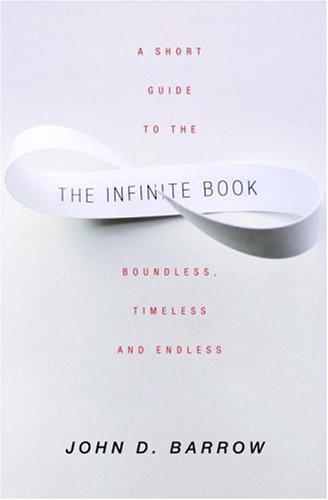
The Infinite Book: A Short Guide to the Boundless, Timeless and Endless
by
John D. Barrow
Published 1 Aug 2005
Dauben, Georg Cantor, Princeton University Press, 1990, p. 146. 6. Rucker, Infinity, p. 309. 7. A. Conan Doyle, ‘The Boscombe Valley Mystery’, The Adventures of Sherlock Holmes, Oxford University Press, 1993. This story was first published in the Strand Magazine 2, 401–16 in October 1891. 8. Detail from The Thirty-six Views of Fuji, by Katsushika Hokusai, reproduced by permission of the Metropolitan Museum of Art, New York. 9. In fact, the question of the infinite age of the Universe does not have a simple invariant interpretation. If there is no preferred scale of time, as Einstein’s theory of general relativity requires, then one can choose ways of measuring time that are finite by one reckoning but infinite on another.

Ghost Train to the Eastern Star: On the Tracks of the Great Railway Bazaar
by
Paul Theroux
Published 9 Sep 2008
Such pictorial fantasies are as old as Japanese erotic images, as some of the oldest woodblock prints, the ukiyo-e from which manga evolved. The word itself was used in Hokusai Manga, a sketchbook of the nineteenth-century master Katsushika Hokusai, who was making brilliant landscapes as well as porn as he approached his ninetieth year. Erotic prints of this kind are known in Japanese as shunga – spring pictures. One authority on Japanese art, Richard Lane, wrote, ‘Scenes of rape are very common in shunga.’ Hokusai’s scenes still have the power to shock, not just episodes of forcible rape, but the rape victim shown sprawled by the roadside, or, in one of the weirder examples, an amorous goggle-eyed octopus performing oral sex on an enraptured naked woman pearl diver.
…
Manga and the graphic novel seemed to represent a dumb, defiant anti-intellectualism, though there were plenty of people who argued that they were art on a par with ukiyo-e. But however well drawn, modern manga were banal or silly or sheer fantasy, hasty and crude compared with the work of the great printmakers. I found Hokusai’s erotic prints much more powerful, indeed sexier, than these ludicrous comics. The Internet café was the sort of futuristic pleasure-dome time killer vaguely imagined by Orwell or Huxley. Only a few of us were picking up e-mail. Most of the hundred or so booths and cubicles were like sectioned-off open-plan offices, with high walls that even a tall Japanese could not peer over to see whether the person sitting cross-legged, wearing headphones, was looking at photos, playing games, watching videos or scrolling through porn.
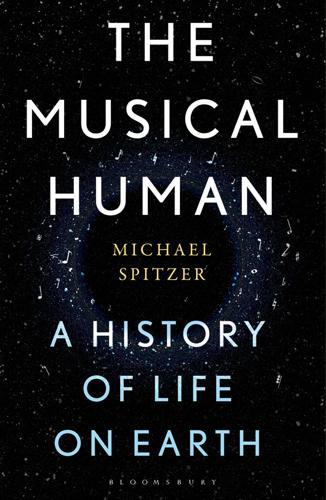
The Musical Human: A History of Life on Earth
by
Michael Spitzer
Published 31 Mar 2021
The first wave came from Africa, flowing across what the postcolonial theorist Paul Gilroy called the ‘Black Atlantic’, the musical traffic of generations of African slaves.13 Seeding a multitude of genres in both North and South America and the Caribbean, from blues, jazz, rock, funk and rap to rumba, reggae and reggaeton, this wealth of music travelled back to Africa to inspire new traditions such as highlife and Afrofunk, the cross-currents and confluences becoming too complex to chart. The second, later, wave emanated from Asia. The 1905 cover of the first edition of Claude Debussy’s orchestral score La mer borrows from Katsushika Hokusai’s (1760–1849) woodblock print, Under the Wave off Kanagawa.14 The image is iconic of the japonisme craze that flooded France in the nineteenth century, but it can also stand for how the Asian ethos captivated all of the West, with its liberating models of consciousness and time. As we shall see at the end of this chapter, this extended to our love affair with animé film scores and J- and K-Pop bands.
…
, here Helmholtz, Hermann von, here Henry VIII, King, here Herrmann, Bernard, here, here Herzog, Werner, here, here heterophony, here, here, here ‘contagious’, here Hidekazu, Yoshida, here Higgins, Kathleen, here, here Hilaire, Vince, here Hildegard of Bingen, here, here Hildesheimer, Wolfgang, here Hinduism, here, here, here, here, here, here hip-hop, here, here Hisaishi, Joe, here, here Hisdosus, here, here Hitchcock, Alfred, here, here Hitler, Adolf, here HMV, here Hobsbawm, Eric, here Hoffmann, E. T. A., here Hofstadter, Douglas, here Hohle Fels cave, here, here, here Hohlenstein-Stadel cave, here Hokusai, Katsushika, here Holbein, Hans, here Hölderlin, Friedrich, here Holy Roman Empire, here, here hominins, here, here, here, here, here, here, here, here, here, here, here, here, here see also Neanderthals homology and analogy, here Honda, Ishirō, here Horkheimer, Max, here, here Houston, Whitney, here, here Hugill, Stan, here Hugo, Chad, here Hugo, Victor, here hunter-gatherer societies, here, here, here, here, here, here, here, here, here, here huqin, here Huron, David, here Hurrian songs, here, here, here Huygens, Christiaan, here hydraulis (water organ), here Hyksos (Sea Peoples), here, here, here, here, here, here ‘Hymn to Poseidon’, here hyoid bone, here, here I Ching, here ‘I Dreamed a Dream’, here ‘I Will Always Love You’, here ‘I’d Like to Teach the World to Sing’, here Iamus, here Ibn Butlan, here Ibn Hazm, here Ibn Khaldun, here, here Ibn Zaidun, here ikwe, here Iliad, here, here, here Imagine Dragons, here Inanna (goddess), here Inca, here, here, here Indian music, here, here, here, here, here, here, here Ingold, Tim, here, here, here insects, here, here, here, here, here, here see also crickets international anthems, here Inuit, here, here, here, here, here Iraq War, here Ishiguro, Kazuo, here Islam, here, here, here, here, here, here, here, here Isturitz, here Iyer, Karaikudi Sambasiva, here Jackendoff, Ray, here, here, here Jackson, Milt, here Jackson, William, here Jacob’s Ladder, here ‘Jadaka Al Ghayth’, here Jakata, here James, William, here Janissary music, here Janus I, King of Cyprus, here Japanese music, here, here Jew’s harp, here Jewish religious music, here, here, here, here Jóhansson, Jóhann, here John XIX, Pope, here John (arch-cantor), here Johnson, Boris, here Johnson, Mark, here Jones, Norah, here Jones, Sir William, here Joseph, Emperor, here Josquin des Prez, here, here, here, here, here Juan de Córdoba, here Julius Caesar, here Jun-Jie Gu, here Juslin, Patrick, here, here Kalan, Bhagwari, here Kaluli, here, here, here, here Kamayura, here Kant, Immanuel, here, here, here, here Kao Yang, Emperor, here Kasparov, Gary, here katajjait throat singing, here Kazakh shamans, here Keats, John, here, here, here ‘Keel Row, The’, here Kenje Kara, here Kepler, Johannes, here Khalife, Marcel, here Khan, Nusrat Fateh Ali, here, here, here Khayal, here Khubilai Khan, here, here Khusrow, Amir, here, here Kim, Sunwook, here Kimigayo, here kinnor, here Kinski, Klaus, here Kisedje, here, here, here, here, here kitharodes, here Klein, Craig, here Klein, Michael L., here Klinger, Max, here Klockenbring, Friedrich Arnold, here Ko Hung, here Koch, Heinrich, here Koelsch, Stefan, here, here, here Komar, Vitaly, here Kondo, Akihiko, here Konishi, Mark, here kora, here Koussevitzky, Serge, here, here Kouwenhoven, Frank, here K-Pop, here, here, here, here, here kritis, here, here Kubik, Gerhard, here, here Kubrick, Stanley, here, here, here, here, here Kukulkan pyramid, here Kupgal, here Kurosawa, Akira, here La Danta pyramid, here ‘La Marseillaise’, here lahb, here Lakoff, George, here Lalitavistara, here Lamarckian evolution, here, here Lang Lang, here language, evolution of, here, here, here, here, here, here, here, here larynx, here, here, here, here, here, here, here, here, here, here Lascaux cave, here ‘Last Post, The’, here late style, here Lavergne, Christophe, here Lazarus, Richard, here Le Franc, Martin, here Leigh, Janet, here Lennon, John, here, here, here, here, here Leo III, Pope, here Leroi-Gourhan, André, here, here Léry, Jean de, here Levallois hand-axes, here Levitin, Daniel, here Lewis, Jerry Lee, here ‘L’homme armé’, here Lienas, Juan de, here Ligeti, György, here liminality, here, here Ling Lun, here Lion-man figurine, here, here, here Liszt, Franz, here lituus, here Live Music Now, here Livy, here Logier, Johann, here Lomax, Alan, here Longinus, here Lord, Albert, here Lordi, here Louis, Duke of Savoy, here ‘Lovelace Test’, here Lubang Jeriji Saléh cave, here Lubbock, Basil, here Lucian, here Lucretius, here Lucy (australopithecine), here, here, here, here, here, here, here lullabies, here, here Lülü Zuanyao, here lur, here lutes, here Lynn, Vera, here lyrebirds, here, here, here lyres, here, here, here, here, here, here, here, here, here, here, here, here, here, here King David and, here, here, here, here Lyres of Ur, here McCartney, Paul, here, here, here, here, here Machaut, Guillaume de, here, here McVay, Scott, here, here ‘Maggie May’, here, here, here Mahler, Gustav, here, here, here, here, here Symphony of a Thousand, here Mahmud of Ghazni, here Malian empire, here, here Malloch, Stephen, here, here Manas, here, here Mandelstam, Osip, here Mandukya Upanisad, here Mann, Thomas, here Mansa Musa, King, here, here maqams, here, here, here Margulis, Elizabeth, here Marquis Yi of Zeng bells, here, here, here, here Martin, George, here, here Martin, Steve, here Marx, Karl, here, here Masoretic accents, here, here, here Maya, here, here M’Barek, Sonia, here Medić, Ivana, here Mehmed II, Sultan, here mehter, here Melamid, Alexander, here melodic contour, here ‘melody lead’, here Melville, Herman, here Mendelssohn, Felix, here, here Mendieta, Gerónimo de, here mental time travel (MTT), here Menuhin, Yehudi, here Mercado, Eduardo, here Merit (goddess), here, here, here Merker, Björn, here Merriam, Alan, here Merton Time Ceremony, here Mesomedes, here, here, here Mesopotamia, here, here, here, here, here, here, here, here, here Messiaen, Olivier, here Metallica, here Meyer, Leonard, here Michel, Misja, here Michelangelo, here, here Middleton, Richard, here midges, here Miku, Hatsune, here, here military music, here mimesis, here, here, here, here, here Miserable Faith, here missionaries, here, here, here, here, here, here, here, here, here, here Mitchell, Fred, here Mithen, Steven, here, here, here, here, here, here Miyazaki, Hayao, here, here modes, ancient Greek, here, here, here, here, here see also maqams (Arabic modes) Mohammed, Prophet, here, here, here Monastic Office of the Sleepless Monks, here Mondrian, Piet, here Mongolian gazelles, here Mongols, here, here, here, here, here monochord, here monody, here, here Monteverdi, Claudio, here, here, here Monty Python, here Moore, Dudley, here Morgan, Piers, here Morley, Iain, here, here, here Morris dances, here Morton, Jelly Roll, here mosquitoes, here mousikē, here Mozart, Wolfgang Amadeus, here, here, here, here, here, here, here, here, here, here, here, here, here, here apocryphal display of skulls, here and artificial music, here compared with Tyagaraja, here Coronation Mass (K. 317), here The Magic Flute, here The Marriage of Figaro, here, here, here ‘Mozart Effect’, here piano concerto (K. 453), here piano concerto (K. 488), here piano sonata (K. 331), here piano sonata (K. 545), here Rondo alla Turca, here, here Symphony No. here, here Mozartkugeln, here Mumtaz Mahal, here muni fruit doves, here, here music education, here, here music technology, evolution of, here music therapy, here musical learning, here musical modernity, here, here, here, here, here Muwashshah, here, here, here Muzak Corporation, here Myers, J.
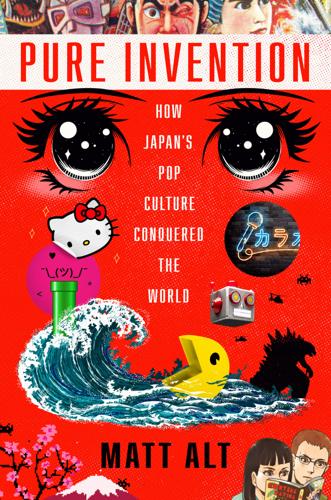
Pure Invention: How Japan's Pop Culture Conquered the World
by
Matt Alt
Published 14 Apr 2020
Impressionists and those inspired by them, such as Degas, Whistler, van Gogh, and Toulouse-Lautrec, immersed themselves in the playful artwork of Kuniyoshi and Hokusai to free themselves from the strictures of ossified European style. Before long, things Japanese began to transform what it meant to be cultured. Charles Tiffany harnessed Japanese flourishes to elevate a humble stationery emporium into America’s top purveyor of urban sophistication. To familiar luxuries such as combs, servingware, silver, and stained glass, he added exotic motifs inspired by or even copied directly from the work of Hokusai and others: fish, turtles, flowers, butterflies, and insects. Such was the impact of the Western world’s first encounter with the handiwork of the shokunin: Japanese artisans who poured heart and soul into their craft, because their craft was their lot in life, all but ordained by the social order of their era.
…
But as he attempted to channel the bolder, more grown-up themes of gekiga through his unique style of manga, his cartoonish-looking protagonists increasingly found themselves in situations that would have made his hero Walt Disney blush. “Those cute characters are dying! They’re having sex!” wrote the child psychologist Tamaki Saito. “It makes you want to say, ‘Sir, isn’t this going a little too far?’ ” But the refined and the vulgar have long existed side by side in Japan; the revered nineteenth-century woodblock print artist Hokusai produced both the iconic Great Wave off Kanagawa and the delirious Dream of the Fisherman’s Wife, in which a woman is portrayed in erotic congress with a giant octopus. Still, fans’ acceptance of Tezuka’s explorations did not translate into influence. Adolescent and young adult readers weren’t interested in his melodramatically cartoonish characters, no matter how naughty the situations into which they were being thrown.
…
In a successful effort to transform his little shop into the nation’s gatekeeper for luxury and style, co-founder Charles Tiffany boasted of his dedication to making wares “even more Japanese than the Japanese themselves,” debuting items such as sterling silver tableware with motifs swiped from prints by Hokusai: a luxury product further elevated by its association with the exotic orient. A Japanese fancy good, on the other hand, is almost precisely the opposite. It is humble, inevitably soft, round, adorable, frilly, or fluffy. Even more important it must radiate a dreamy, aspirational foreign style—American or European in particular.
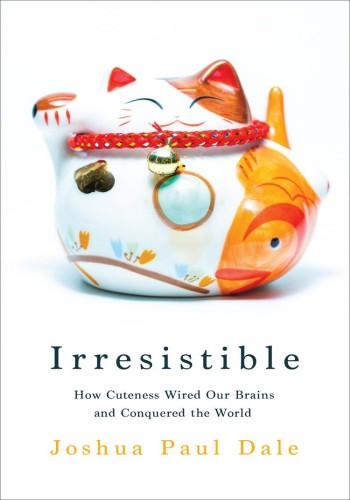
Irresistible: How Cuteness Wired our Brains and Conquered the World
by
Joshua Paul Dale
Published 15 Dec 2023
As we have seen, some people trace the origins of manga all the way back to the twelfth-century Scroll of Frolicking Animals. In the Edo period the word ‘manga’ referred to a collection of unrelated sketches in an artist’s notebook. Hokusai (c.1760–1849), the famed print artist, published fifteen volumes of such sketches, with subjects that included catalogues of facial expressions, animals and plants, along with half-human monsters and mythological creatures, many imbued with a satirical sense of humour. Hokusai’s manga greatly influenced artists such as Monet, Degas, Gauguin and Lautrec when they fortuitously made their way to Paris in 1856, perhaps as packing material in a crate of porcelain.17 Modern manga was inspired by the American comic strips that a Japanese newspaper reporter brought back from the US in 1919.18 By the 1930s, scores of characters, comics and cartoons in both the US and Japan were being drawn with a juvenile, cute appearance.
…
1 head piebald coloration on 1, 2 shape 1, 2, 3, 4, 5, 6, 7, 8, 9, 10, 11, 12, 13 size 1, 2, 3, 4, 5, 6, 7, 8, 9, 10, 11, 12, 13, 14, 15 Hearn, Lafcadio 1 Hearne, Samuel 1 Heian era 1, 2, 3, 4, 5, 6, 7, 8, 9, 10, 11 height 1, 2, 3 Hello Kitty 1, 2, 3, 4, 5, 6, 7, 8, 9, 10, 11, 12 Henderson, Colonel Bob 1, 2 Henry, William 1 Higonnet, Anne 1 Hinde, Robert A. 1, 2, 3 hirahira style 1, 2 Hokusai 1 Holland glass 1 Hololive Productions 1 hominids 1, 2 Homo erectus 1 Hooff, Jan van 1 Howard-Smith, Stephanie 1 Hrdy, Sarah 1, 2 Hudson Bay 1 hugging 1, 2, 3, 4 Huizinga, Johan 1 hunter-gatherers 1, 2 Huron, David 1 Ideal Novelty and Toy Company 1 Ikeda, Riyoko: The Rose of Versailles 1 immaturity 1, 2, 3, 4 immigration 1, 2 Inari 1 Infant Cognition Center, Yale University 1 innocence, concept of childhood 1, 2, 3, 4, 5, 6, 7, 8, 9, 10, 11, 12, 13, 14, 15 Institute of Cytology and Genetics, Novosibirsk, Siberia 1 iPhone 1 Ishy (fox) 1 Island Rule 1 Izu Teddy Bear Museum, Japan 1 JAB Canid Education and Conservation Center, US 1, 2 Japan ancient Japan, cuteness in 1 boys in see boys contemporary Japan, cuteness in 1 emoji and see emoji girls in see girls group-oriented values within, cuteness and 1 isolationist foreign policy (sakoku) 1 Japonisme, cult of and 1, 2, 3 kawaii and see kawaii manga and see manga overstimulation of people, kawaii and 1 peak cuteness, era of 1 playfulness and see play pre-twentieth-century history of cuteness in 1 stereotyped as land full of cute things and cute people 1, 2, 3, 4, 5 women in see women See also individual area and place name Japan Expo, Paris 1 Japan National Tourist Organization 1 jaws, shortening of 1, 2, 3, 4, 5 Jonson, Ben 1 kana (phonetic Japanese alphabet) 1 Kanebo 1 Kanesaka, Erica 1, 2 kawahayushi (face turned red from excitement or embarrassment) 1 kawaii American cute and 1, 2, 3, 4, 5 animals and see animals bonding force 1 bottom-up aesthetic 1 boys and see boys contemporary Japan and 1 Cutequake and 1 domestication and see domestication emoji and see emoji girls and see girls group-oriented values of Japanese society and 1 Hermit Kingdom and 1 history of 1 ‘Kawaii!’
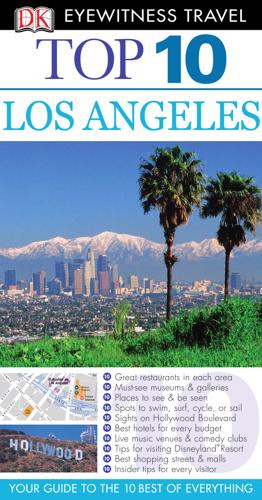
Eyewitness Top 10 Los Angeles
by
Catherine Gerber
Published 29 Mar 2010
. • Map C2 • 1200 Getty Center Dr, Brentwood • 310-440-7300 • Open 10am–5:30pm Tue–Sun (to 9pm Sat) • Free, parking $10 • www.getty.edu 12 1 Irises 2 Young Italian Woman at a Table 3 Wheatstacks, Snow Effect, Morning 4 The Calydonian Boar Hunt 5 The Abduction of Europa 6 Venus & Adonis 7 Christ’s Entry into Brussels in 1889 8 La Promenade 9 Cabinet on Stand 0 The Adoration of the Magi ! Irises Van Gogh (1853–90) painted this exquisite work (right) in the last year of his life in a mental asylum. The intense color and energetic composition borrow from Gauguin and Japanese printmaker Hokusai. Italian @ Young Woman at a Table Cézanne’s (1839–1906) emotionally charged painting of a melancholy young woman shows off his great versatility and technical prowess. Snow £ Wheatstacks, Effect, Morning This is one of 30 works which Claude Monet (1840–1926) painted between 1890 and 1891. Set against a soft sky and faintly visible houses, the wheatstacks are a solid, imposing presence (right).
…
Sculptures, including Rodin’s The Thinker, dot the gardens, inspired by Monet’s at Giverny in France. d Map E1 • 411 W Colorado Blvd • 626-449-6840 • Open noon– 6pm Wed–Mon, until 9pm Fri • Adm (free for under 19s and students with ID, also on 1st Fri of month) • www.nortonsimon.org Asia Museum £ Pacific Grace Nicholson, infatuated with all things Asian, had her 1920s private home designed to look like a Chinese imperial palace. It now makes a fitting setting for this museum’s artifacts from Asia and the Pacific Islands. Exhibits, usually drawn from the 14,000-strong collection, feature masks from New Guinea, paintings by Japanese masters Hokusai and Hiroshige, and woven costumes from Pakistan. d Map F1 • 46 N Around Town – Pasadena Still Life with Lemons, Oranges, & a Rose by Zurbarán, Norton Simon Museum Los Robles Ave • 626-449-2742 • Open 10am–6pm Wed–Sun • Adm (free 4th Fri of month) • www.pacificasiamuseum.org Town Pasadena $ Old Pasadena’s historic business district along western Colorado Boulevard was once a decaying part of town, but has now been restored.
…
Paul 12 Getty Trust 12 Getty Villa 13 Ghost & Legends Tour 130 Giant Billboards 8 Gibson Amphitheatre 54 Gilmore Stadium see CBS TV City Giraud, Alain 67 Glendale Galleria 53 Go Los Angeles Card 140 Gold Bug 92 Gold’s Gym 47 Golden Spur Café 28 The Golden Vine Terrace 30 Gondola Getaway 138 Good Luck Bar 100 Goodhue, Bertram 76 Grace 109 The Grafton on Sunset 147 Graham, Robert 72, 77, 78, 107 Grand Californian Hotel 33, 149 Grand Tour of Los Angeles 138 Grauman’s Chinese Theatre 11, 56, 95, 97 Great Hall Aquarium of the Pacific 128 Disneyland 33 Greek Theatre 28, 54 Green Line 137 Green Pleasure Pier 37 Greene & Greene Craftsman Houses 91 Greene & Greene Exhibit 23 Greene, Charles & Henry 23, 25, 40 Greystone Park & Mansion 42 Griffith, D.W. 39 Griffith, Griffith Jenkins 28 Griffith Park 7, 28–9, 42, 54, 124 Griffith Observatory & Planetarium 28, 29, 42 Griffith Park Southern Railroad 29 Merry-Go-Round 29 Grimes, Les 63 Grizzly River Run 32 Gross, Laura Mae 61 The Groundlings 55 The Grove 103, 105 Guelaguetza 85 guided tours 138 Guide Line Tours 11 Gumbo Pot 105 H Ha Ha Café 55 Hale House 82 Halloween Carnival 104 The Halsted House 91 Hamilton Selway Gallery 107 Hammer, Armand 112 Hammer Building 17 Harry Winston 114 Haskin House 82 Haunted Mansion 30 The Hawks House 91 health insurance 142 Heritage Square Museum 82 Hermosa Beach 45, 119 Highland Gardens Hotel 148 The Highlands 100 Hilton Checkers Hotel 150 Hippodrome 117 Hirai, Isao 78 Historic Hollywood Boulevard 6, 10–11, 95 historic hotels 146 Historical Society of Southern California 82 Hockney, David 10, 17, 18 Hokusai 12, 87 Hollyhock House 40, 97 Hollywood 6, 8, 9, 36, 58–9, 94–101, 124 bars & dance clubs 100 map 94 restaurants 101 Hollywood & Highland 10, 11, 53, 94, 95, 97 Hollywood Bowl 54, 95 Hollywood Celebrity Hotel 148 Hollywood Forever Cemetery 96 Hollywood Heritage Museum 95 Hollywood Hills 29, 41 Hollywood Museum 97 Hollywood Orchid Suites Hotel 148 Hollywood Park Racetrack 46 Hollywood Roosevelt Hotel 10, 97, 146 Hollywood Sign 7, 95, 96, 97 Hollywood Turf Club 46 Hollywood Visitors’ Information Center 58, 94 Homer, Winslow 16 Hopper, Edward 25 Hotel Bel-Air 144 Hotel Beverly Terrace 149 Hotel California 145 Hotel Figueroa 146 Hotel Oceana 144 Hotel Palomar Los Angeles 149 Hotel Queen Mary 146 hotels 144–151 House of Blues 106 The Hump 125 I The Ice House 55 IMAX Theater see California Science Center IMAX Theater The Improv 55 Improv Olympic West 55 Indiana Jones Adventure 30 Inn at Playa del Rey 151 Inn at Venice Beach 148 Inn of the Seventh Ray 125 Inn on Mt.
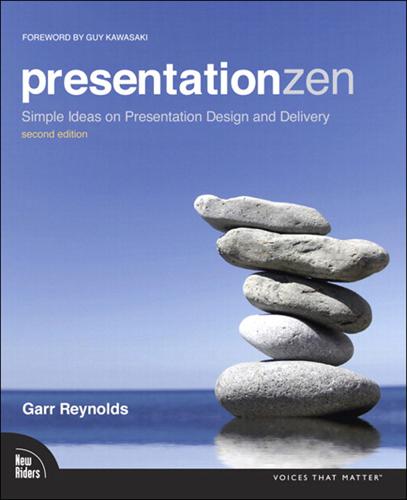
Presentation Zen
by
Garr Reynolds
Published 15 Jan 2012
Using grids to divide your slide “canvas” into thirds, for example, is an easy way at least to approach golden-mean proportions. In addition, you can use the grids to align elements and give the overall design balance, a clear flow and point of focus, and a natural overall cohesiveness and aesthetic quality that is not accidental but is by design. Hokusai’s “Red Fuji” with nine-panel grid laid on top. The image on the right is not a slide—it’s a picture of Hokusai Katsushika’s (1760–1849) “Red Fuji” from the ukiyo-e series called Thirty-six Views of Mount Fuji. I placed a nine-panel grid over the print to show how the rule of thirds can be seen in the composition. Remember, however, that the rule of thirds is not a rule at all, it is only a guideline.
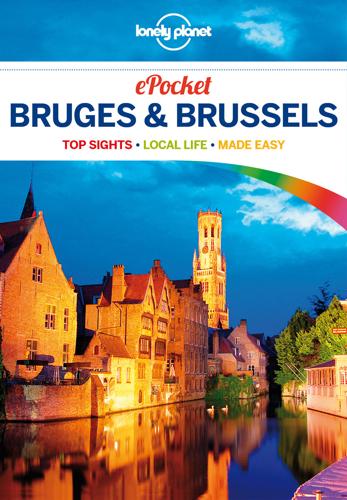
Lonely Planet Pocket Bruges & Brussels
by
Lonely Planet
and
Helena Smith
Published 1 Nov 2012
Centre Belge de la Bande Dessinée GAMMA-RAPHO VIA GETTY IMAGES © Don’t Miss The Invention of the Comic Strip This exploration of the history of the ninth art goes right back to mosaics, and makes a compelling case that the manuscripts of medieval monks – with their divided story strips and speech bubbles – were the first cartoons. The evolution continues via Hokusai’s vivid sketches of wrestlers through to the picture stories of 19th-century New York newspapers. The Museum of the Imagination This gallery focuses on Belgium’s favourite cartoon character: Tintin, created by the great Hergé. It posits Tintin as a visually blank ‘everyman’ who can transform himself into a granny, a turbaned Indian or a white-bearded sage.
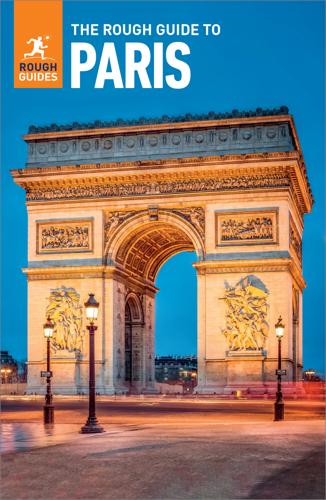
The Rough Guide to Paris
by
Rough Guides
Published 1 May 2023
Since the 1980s, it turned out, hundreds of these cataphiles had been holding anything from underground parties and art exhibitions to festivals and, it was rumoured, orgies. Experienced tunnel-goers talked of elaborate murals and a huge, pillared party room known as ‘La Plage’, overlooked by a graffiti version of Hokusai’s The Wave. In fact, the tunnels underneath Chaillot form only a small part of a vast network that dates back to the medieval era, when the stone for building Paris was quarried out from its most obvious source, immediately underfoot. Today, more than 300km of underground galleries lie beneath the city, especially on the Left Bank’s 5e, 6e, 14e and 15e arrondissements, where the Grand Réseau Sud runs for more than 100km.
…
Avenue Frochot MPigalle One of the city’s most elegant villas (private streets), avenue Frochot, leads off place Pigalle. Ordinary mortals are kept out by a digicode gate, so you’ll never get to see the former residences of such greats as Toulouse-Lautrec, Django Reinhardt and Jean Renoir. Still, the facade of the house beside the gate at the south end is worth a look: it’s a giant, Art Deco, stained-glass take on Hokusai’s famous woodblock print The Great Wave, which depicts a tidal wave dwarfing Mount Fuji. The window owes its existence to a cabaret that stood here in the 1920s, Le Shanghaï, and looks particularly splendid when it’s illuminated after dark. Paris cabarets For many foreigners, entertainment in Paris is still synonymous with cabaret, especially that mythical name, Pigalle’s Moulin Rouge, at 82 boulevard de Clichy, 18e arrondissement (http://moulinrouge.fr).
…
Monet’s house, an idyllic, dusky pink building with green shutters, stands at the top of the gardens. Inside, the rooms are all painted different colours, exactly as they were when he lived here, and are packed with family photos and paintings – a pretty blue room features the painter’s original collection of Japanese prints, including wonderful works by Hokusai and Hiroshige. Note, though, that you won’t see any original Monet paintings. Musée des Impressionnismes Giverny 99 rue Claude Monet • On opening days 10am–6pm; check website for schedule • Charge • http://mdig.fr Just up rue Claude Monet from the artist’s gardens is the Musée des impressionnismes Giverny.

Radical Cities: Across Latin America in Search of a New Architecture
by
Justin McGuirk
Published 15 Feb 2014
Up underneath one of the water towers that crown the elevator cores, I notice whole chunks of concrete coming away. The walls generally are fissured. Piedrabuena is a prime site for lovers of modernist ruins. Inevitably, they shoot hip-hop videos here. Part of the appeal must be the murals. Luciano takes me on a tour of them, mostly passable renditions of art-historical masterpieces. Guernica and Hokusai’s wave are here, as are Dalí’s melting clocks. They are the works of a local artist known as Pepi, who has since moved out of Piedrabuena. In front of an ersatz version of Goya’s Execution of the Defenders of Madrid, Luciano says: ‘Normally if you want to see this painting you have to pay to get into a museum, but we can just sit here and enjoy it with a beer.’
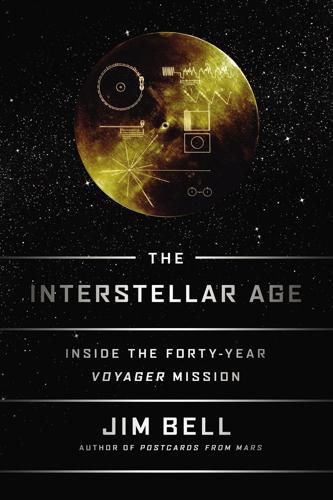
The Interstellar Age: Inside the Forty-Year Voyager Mission
by
Jim Bell
Published 24 Feb 2015
It is also easy to imagine that it would be difficult enough for alien beings to understand our photographs, so abstract or stylized paintings of our world would have even less of a chance of being comprehended. Still, some would have liked to see representations of Van Gogh’s painting Starry Night, Michelangelo’s sculpture of David, or Hokusai’s woodcut of The Great Wave off Kanagawa included, no doubt, but Sagan and the others involved made their call. Everyone involved in crafting the Voyager interstellar message realized, of course, that the chances of any message sent into space in this manner being actually received and interpreted by other beings would be extremely tiny.
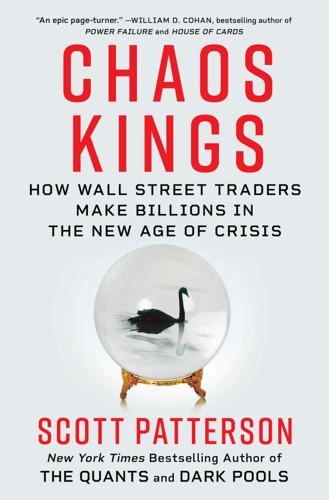
Chaos Kings: How Wall Street Traders Make Billions in the New Age of Crisis
by
Scott Patterson
Published 5 Jun 2023
In Santa Monica, Yarckin sat mesmerized by the numbers flickering on his screen. Universa’s trading room was eerily quiet. He had a sick feeling in the pit of his stomach that something horrible was happening. He looked up from his desk at a large print reproduction of the famous Japanese painting of fragile ships tossed by furious waves, Hokusai’s Great Wave off Kanagawa, hung by Spitznagel the previous year. A reproduction of a black swan painting by Belgian symbolist William Degouve de Nuncques hung on another wall. As the market crashed, Spitznagel rushed from the meeting to his hotel room, fielding phone calls from anxious investors and managing the fund’s positions from his laptop alongside his traders back at the Santa Monica office.
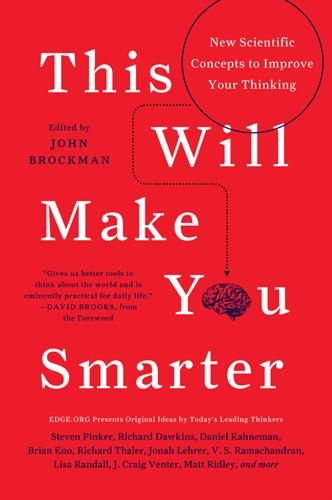
This Will Make You Smarter: 150 New Scientific Concepts to Improve Your Thinking
by
John Brockman
Published 14 Feb 2012
With its jaws gaping, poised to swallow its prey, The Physical Impossibility of Death in the Mind of Someone Living mirrored the killer instincts of hedge funds, feared predators in financial markets. Cohen is quoted as saying that he “liked the whole fear factor.” The work of Japanese artist Takashi Murakami provides confirmation. Inspired by Hokusai’s famous nineteenth-century woodblock print The Great Wave off Kanagawa, Murakami’s 727 paintings showed Mr. DOB, a post-nuclear Mickey Mouse character, as a god riding on a cloud or a shark surfing on a wave. The first 727 is owned by New York’s Museum of Modern Art, the second by Steven Cohen. Parallelism is also evident in the causes underlying several crises facing humanity.

The Icon Handbook
by
Jon Hicks
Published 23 Jun 2011
As I had originally trained in illustration, but had so far followed a graphic design career path, icon design was a welcome return to my earlier skills. I started by creating replacements for the Camino browser’s UI in 2003 and, in particular, its application icon, which I based on the famous Japanese painting The Great Wave by Hokusai. Looking back now, those early icons were fairly low quality, but I was hooked and all I wanted to do was stop all these print and web design projects and instead draw icons all day. It was the Great Wave icon for Camino that got the attention of Steven Garrity, who was charged with finding volunteers for a new Mozilla visual identity team to create a new identity for their new browser.
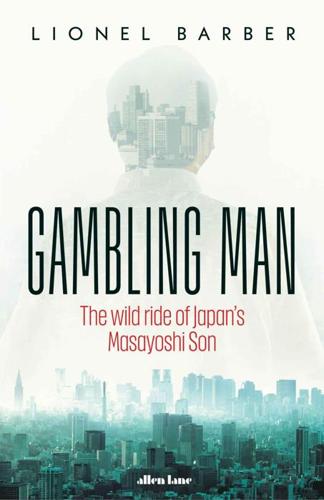
Gambling Man
by
Lionel Barber
Published 3 Oct 2024
A coronavirus first detected in Wuhan, China, was spreading like wildfire across the globe. At an earnings presentation, on that day, Masa ignored the threat and talked up SoftBank’s prospects. The tide is turning, he declared, as he stood next to a slide with a crashing wave drawing from the famed Hokusai woodcut. That same day, the World Health Organization announced it had a name for the new virus strain: Covid-19. On 10 March, Masa broke a three-year Twitter silence to say he was ‘worried’ about Covid-19. He promised to offer one million free tests for the virus. People could take a nasal swab at home and mail it to a lab, which would test the specimen and send back the results.
…
To every intent and purpose, the visitor might have been transported in this moment to Kyoto, where rock gardens, temples and healing springs represent the finest of Japanese cultural heritage. In Masa’s make-believe world on the twenty-eighth floor of SoftBank’s headquarters, Japanese art adorns the walls, including calligraphy from the Edo period. In one corner there is a Hokusai painting of an old man looking up in awe to the sky. Further along, a framed photograph of one of Masa’s favourite white teacup poodles. At the far end of the room lies the main dining area featuring an immaculately laid table and three bottles of Masa’s favourite Romanée-Conti wines placed on a serving counter to the side.

Underland: A Deep Time Journey
by
Robert Macfarlane
Published 1 May 2019
~ I come feet first through the ragged hole and drop into a straight-running tunnel, its ceiling sturdily arched. The limestone walls writhe with graffiti: antifa slogans, zombie skulls with popping eyes, tags, names. ‘The further in we get, the better the wall art gets,’ says Lina. ‘In the Salle de la Plage you’ll see Hokusai’s Wave. Let’s move. We’ve got miles to cover, and it’s good not to linger near the entrance. Plus – there’s the Bangra to negotiate first, which will slow us down.’ ‘The Bangra?’ ‘You’ll see. We need to find somewhere to sleep tonight, in the next few hours. We’ve a long day moving north tomorrow, which may well bring some obstacles.’
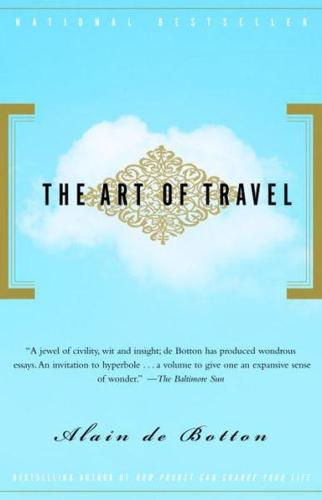
The Art of Travel
by
Alain de Botton
Published 19 Nov 2008
If Velazquez was his guide to grey and to the coarse faces of large cooks, then Monet was his guide to sunsets, Rembrandt to morning light and Vermeer to adolescent girls (‘A perfect Vermeer,' he exclaimed to Theo after he spotted one example near the arena). The sky over the Rhone after a heavy rain shower reminded him of Hokusai, the wheat of Millet and the young women in Saintes-Maries de la Mer of Cimabue and Giotto. 3. Nevertheless—and fortunately for his artistic ambitions—van Gogh did not believe that previous artists had captured everything there was to see in southern France. To the contrary, many had, in his view, completely missed the essentials.
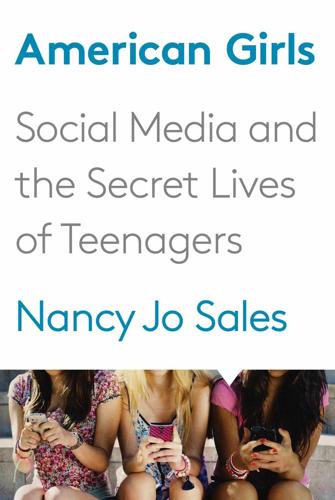
American Girls: Social Media and the Secret Lives of Teenagers
by
Nancy Jo Sales
Published 23 Feb 2016
“Is that when somebody likes sex?” When I asked her and her friends if they’d ever heard of feminism, another girl said, “Is that when a boy acts like a girl?” But those same girls are not unfamiliar with these words now, as I learned in a later conversation. In 2014, a surge of feminism rose up online like Hokusai’s Great Wave off Kanagawa. It all began in January, in the days after Elliot Rodger, age twenty-two, a rich kid from Calabasas, California, killed six people and injured fourteen others before committing suicide in Isla Vista, near the campus of the University of California, Santa Barbara. He had gone there seeking women to punish for their failure to appreciate him and have sex with him, he said.
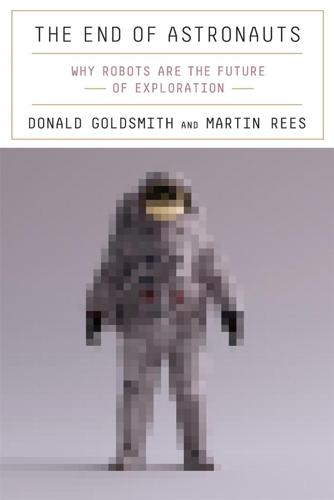
The End of Astronauts: Why Robots Are the Future of Exploration
by
Donald Goldsmith
and
Martin Rees
Published 18 Apr 2022
In his 1997 book Mining the Sky, the cosmochemist John Lewis lamented that “as long as the human population remains as pitifully small as it is today, we shall be severely limited in what we can accomplish.” Lewis stressed that “human intelligence is the key to the future.… Having only one Einstein, one Hokusai, one Mozart, one da Vinci, one Shankara, one Poulenc, one Arthur Ashe, and one Bill Gates is not enough. We need—and can have—a million times as many.… Life is not a cancer of matter; it is matter’s transcendence of itself.… Intelligent life, once liberated by the resources of space, is the greatest resource in the solar system.”7 A notable inconsistency seriously weakens most scenarios for these grandiose space projects.
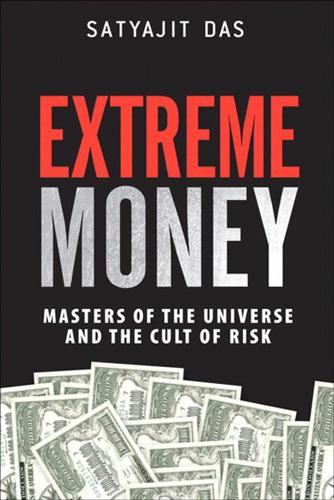
Extreme Money: Masters of the Universe and the Cult of Risk
by
Satyajit Das
Published 14 Oct 2011
Newer generations favored modern art, which expressed the artist’s angst at the discovery of their inability to draw or paint at all. Distillation of suffering exorcising the guilt of wealth did well. Charles Saatchi famously profited from Marc Quinn’s Self—a cast of the artist’s head made from his frozen blood. Art confirming the self-image of financiers attracted especially high prices. Inspired by Hokusai’s famous nineteenth-century woodblock print The Great Wave of Kanagawa, the Japanese artist Takashi Murakami’s 727 paintings showed Mr. DOB, a post nuclear Mickey Mouse character, as a god riding on a cloud or a shark surfing on a wave. The first 727 is owned by New York’s Museum of Modern Art, the second by Steve Cohen.

The Sushi Economy: Globalization and the Making of a Modern Delicacy
by
Sasha Issenberg
Published 1 Jan 2007
New Tokyo International Airport, as it was known, opened in 1978 near Narita, a small town east of the capital. Its purpose was to satisfy the growing international traffic of a newly prosperous country building too quickly and mercilessly to worry about artistry in construction, and painting instead in concrete. In the early nineteenth century, the artist Hokusai depicted Tokyo Bay seascapes just miles from Narita. If he had worked in the area 150 years later, his waves would likely be on-ramps. Up to twenty tons of merchandise spill from the cargo hold of flight 676, much of it flowers and textiles and computer disk drives that originate across southeast Asia and make their way to Japanese consumers on Thai Airways through its hub in Bangkok.

Discover Kaua'i Travel Guide
by
Lonely Planet
Salt Pond Beach Park TERRY EGGERS/CORBIS © ISLAND ART GALLERY Arts & Crafts Offline map ( 335-0591; www.angelaheadleyislandart.com; 3876 Hanapepe Rd; 11am-5pm Mon-Sat, to 9pm Fri) Here is your first stop for contemporary Hawaiian art. Come and see Rocky Riedel’s reverse acrylic paintings (paintings on the back of a clear acrylic sheet) which are luminous blends of color; also Troy Carney’s Hokusai-like giclées on wood, which provide a suitably dreamy, Asian take on paradise, Hawaiian-style. BANANA PATCH STUDIO Arts & Crafts Offline map ( 335-5944, 800-914-5944; www.bananapatchstudio.com; 3865 Hanapepe Rd; 10am-4:30pm Sat-Thu, to 9pm Fri) Koi watercolors, vibrant island art, souvenir ceramic tiles.

Lonely Planet Ireland's Best Trips
by
Lonely Planet
Published 1 Mar 2017
Top of Chapter TRIP HIGHLIGHT c Glebe Gallery This is a true treat: the top-notch artwork at Glebe Gallery (074-913 7071; www.heritageireland.ie; Church Hill; adult/child €4/2; 11am-6.30pm daily Easter & Jul-Aug, Sat-Thu Jun & Sep, last admission 5.30pm) belonged to English painter Derrick Hill. Works include pieces by Tory Island’s ‘naive’ artists, plus Picasso, Landseer, Hokusai, Jack B Yeats and Kokoschka. The Drive » The R251 winds south through woodland, hugging the lough shore. Turn onto the R250 towards Letterkenny (where there is accommodation; see here). Soon you’ll see Newmills Corn and Flax Mills signed on your right (11km). Top of Chapter d Newmills Corn and Flax Mills A whirring, creaking, gushing delight, this restored three-storey, water-powered corn mill (074-912 5115; www.heritageireland.ie; R250; 10am-6pm late May-Sep) is full of in-motion grinding stones, drive shafts, cogs and gears.

All That Glitters: A Story of Friendship, Fraud, and Fine Art
by
Orlando Whitfield
Published 5 Aug 2024
When one of these paintings sold in 2014, when Smith was twenty-five, for $372,000 (against an estimate of $66k–99k) the price tag seemed to redefine the phrase ‘money shot’. Smith quickly got signed up by Per Skarsdedt, an Upper East Side secondary market dealer known for his impeccable shows of artists like Warhol and Bacon. Smith’s 2014 show at the gallery, Tigris, was an exhibition of paintings apparently inspired by Hokusai, the Japanese woodcut artist of the Edo period; somehow they looked like military camouflage. In a review, the Village Voice described the exhibition as both ‘undistinguished’ and ‘a shrewd career move’. In 2022, Smith’s average price at auction was $22k. Adam McEwan made his gum paintings by chewing bubblegum and sticking it to blank canvases.
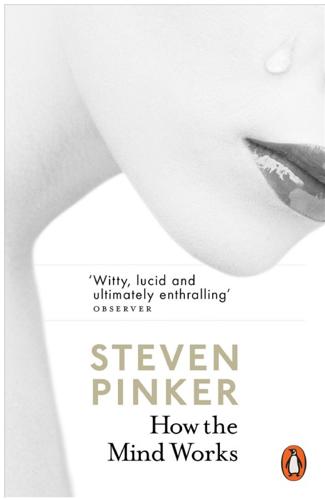
How the Mind Works
by
Steven Pinker
Published 1 Jan 1997
The philosopher Nelson Goodman came up with an insight while examining the difference between art and other symbols. Suppose by coincidence an electrocardiogram and a Hokusai drawing of Mount Fuji both consisted of the same jagged line. Both tracings stand for something, but the only part of the electrocardiogram that matters is the position of each point that the line passes through. Its color and thickness, the size of the tracing, and the color and shading of the paper are irrelevant. If they were changed, the diagram would remain the same. But in the Hokusai drawing, none of the features may be ignored or casually altered; any might have been deliberately crafted by the artist.
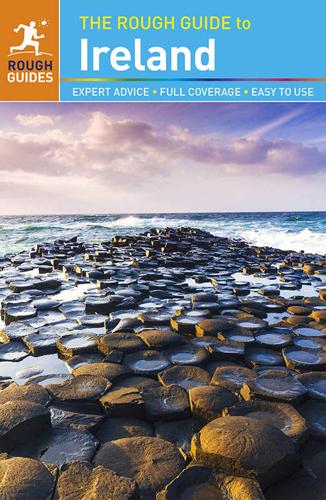
The Rough Guide to Ireland
by
Clements, Paul
Published 2 Jun 2015
From a distance the mountain appears to be snow-covered, but skirting the northern shore of Lough Nacung, it becomes apparent that the white coloration has geological, rather than meteorological, causes. Quite often the area around Errigal is shrouded in mist, but on a clear day the beauty of the mountain is unsurpassable, its silvery slopes resembling the Japanese artist Hokusai’s images of Mount Fuji. The hour-long hike up to the top is a must, and there’s a waymarked trail from the road, 2km past the Poisoned Glen turn-off, up the southeast ridge. The climb to the summit is well worth it for the stupendous views: virtually all of Donegal, and most of Northern Ireland, is visible, and you could easily spend several hours just sitting and absorbing the contrasts provided by coastline, loughs and mountains.
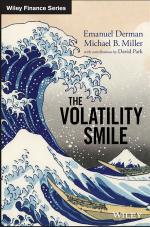
The Volatility Smile
by
Emanuel Derman,Michael B.Miller
Published 6 Sep 2016
With offices in North America, Europe, Australia, and Asia, Wiley is globally committed to developing and marketing print and electronic products and services for our customers’ professional and personal knowledge and understanding. The Volatility Smile EMANUEL DERMAN MICHAEL B. MILLER with contributions by David Park Cover image: Under the Wave off Kanagawa by Hokusai © Fine Art Premium / Corbis Images Cover design: Wiley Copyright © 2016 by Emanuel Derman and Michael B. Miller. All rights reserved. Published by John Wiley & Sons, Inc., Hoboken, New Jersey. Published simultaneously in Canada. No part of this publication may be reproduced, stored in a retrieval system, or transmitted in any form or by any means, electronic, mechanical, photocopying, recording, scanning, or otherwise, except as permitted under Section 107 or 108 of the 1976 United States Copyright Act, without either the prior written permission of the Publisher, or authorization through payment of the appropriate per-copy fee to the Copyright Clearance Center, Inc., 222 Rosewood Drive, Danvers, MA 01923, (978) 750-8400, fax (978) 646-8600, or on the Web at www.copyright.com.
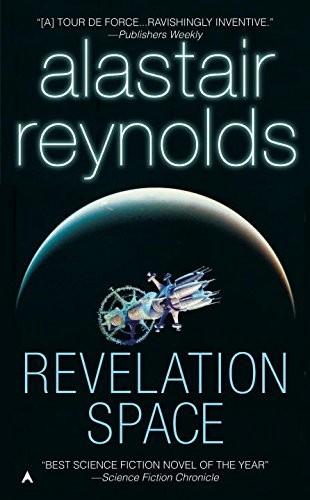
Revelation Space
by
Alastair Reynolds
Published 1 Jan 2000
It's about time you stopped thinking of him as your worst enemy, you know.' They stepped into the sterile hush of the waiting car. The vehicle was adapted from one of the smaller surface exploration buggies, four balloon wheels at the extremities of its air-smoothed body, comms gear stowed in a matt-black hump on the roof. It was painted Inundationist purple, with Hokusai wave pendants mounted on the front. 'If it wasn't for my father,' Pascale continued, 'you'd have died during the coup. He protected you from your worst enemies.' 'That doesn't make him a very competent revolutionary.' 'And what does that say about the regime he managed to overthrow?' Sylveste shrugged.

Red Mars
by
Kim Stanley Robinson
Published 23 Oct 1992
Such a big bulge in the planet, Tharsis. Something inside, breaking out. As in the current situation. Yes, they were stuck on the side of the Tharsis Bulge of Martian history, with the big volcanoes about to pop. And then there one was, Pavonis Mons, an enormous dream mountain, as if the world were a print by Hokusai. Frank found it difficult to talk. He avoided looking at the TV at the front of the car— news flashed up and down the train almost instantly anyway, in snatches of overheard conversation or the looks on people’s faces. It was never necessary to watch the video to find out the really important news.

Hawaii
by
Jeff Campbell
Published 4 Nov 2009
It covers the artistic traditions of almost every continent, playing a leading role in the area of Asian art. Here you can see masterpieces by Monet, Matisse and Gauguin; galleries of Greek and Roman antiquities and Italian Renaissance paintings; major works of American modern art; ancient Japanese woodblock prints by Hiroshige and Hokusai; Ming dynasty–era Chinese calligraphy and painted scrolls; Indian temple carvings; war clubs and masks from Papua New Guinea – and so much more. * * * CRUISING FOR ART Smart urban professionals now flock to once-seedy Nu′uanu Ave in Chinatown for a dose of art and culture, socializing, live music and bar-hopping.
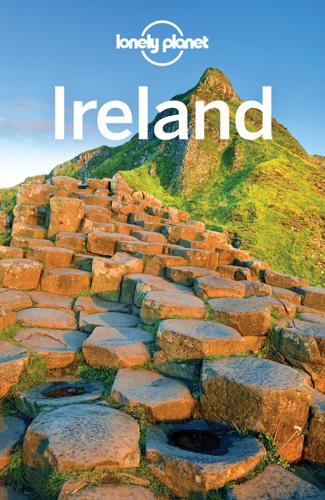
Lonely Planet Ireland
by
Lonely Planet
Glebe House & GalleryGALLERY ( GOOGLE MAP ; %074-913 7071; www.heritageireland.ie; Church Hill; adult/child €5/3; h11am-6.30pm daily Easter, Jul & Aug, Sat-Thu Jun & Sep, last admission 5.30pm) The English painter Derrick Hill bought this 1828 mansion in 1953, providing him with a mainland base close to his beloved Tory Island. Sumptuously decorated with an evident love of all things exotic, the real lure here is Hill's astonishing art collection. Besides paintings by Hill and Tory Island's 'naive' artists are works by Picasso, Landseer, Hokusai, Jack B Yeats and Kokoschka. A guided tour of the house takes about 45 minutes. Before Hill arrived, the house served as a rectory and then a hotel. The lavish gardens can also be toured and there is a cute little cafe. Northeastern Donegal Rosguill Peninsula The best way to appreciate Rosguill's rugged splendour is by driving, cycling or even walking the 15km Atlantic Drive, a waymarked loop on minor roads signposted to your left as you come into the sprawling village of Carrigart (Carraig Airt) from the south.

Ireland (Lonely Planet, 9th Edition)
by
Fionn Davenport
Published 15 Jan 2010
Before Hill arrived, the house served as a rectory and then a hotel. The 1828-built mansion is sumptuously decorated with an evident love of all things exotic, but its real appeal is his astonishing art collection. In addition to paintings by Hill and Tory Island’s ‘naive’ artists (see the boxed text, Click here) are works by Picasso, Landseer, Hokusai, Jack B Yeats and Kokoschka. The woodland gardens are also wonderful. A guided tour of the house takes about 45 minutes. Return to beginning of chapter DUNLEWEY & AROUND pop 700 Blink and chances are you’ve missed the tiny hamlet of Dunlewy (Dún Lúiche) beside Lough Dunlewy. You won’t miss Mt Errigal, however, whose bare face towers over the surrounding area.